Timo Anis is a photographer who at the moment is focused on motorsport races, but he also shoots some wedding and portrait photography. In the motorsport field, he's one of the few FIA's World Rally Championship photographers who are following the championship in every continent it goes. His travels take him from Sweden to Australia and Chile. As you can see, that itself provides a great layout for images and gives him a lot of opportunities in his work. His 2020 season started with a legendary event in Southern France with an iconic Rallye Monte Carlo. We had the chance to talk with Timo about the event and the gear that he took with him.
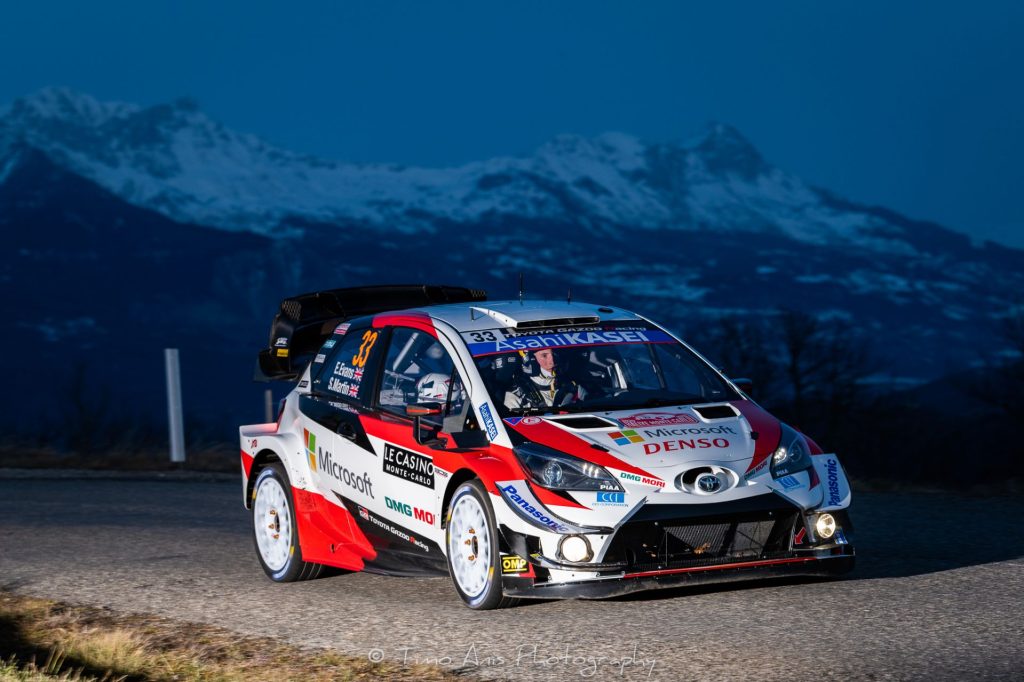
f-stop: You cover a lot of motorsport events, can you please tell us something the WRC Rallye Monte Carlo and what makes it different than others?
Timo Anis 
One of the oldest, toughest and most demanding events in the world rally championship calendar. What makes it so difficult? These are the roads and the climate in the mountains. It could be raining or snowing. There can be fog or sunshine. You could have the rain at the start and snow on the top of the super special stage. Which tires one should use? This is a big question for everyone! One never takes anything for granted in Monte Carlo rally. You can only learn and take the experience with you along the process. For sure this isn't an event where you can go flat out from start to finish. One has to be wise, and know when to take it more steady.
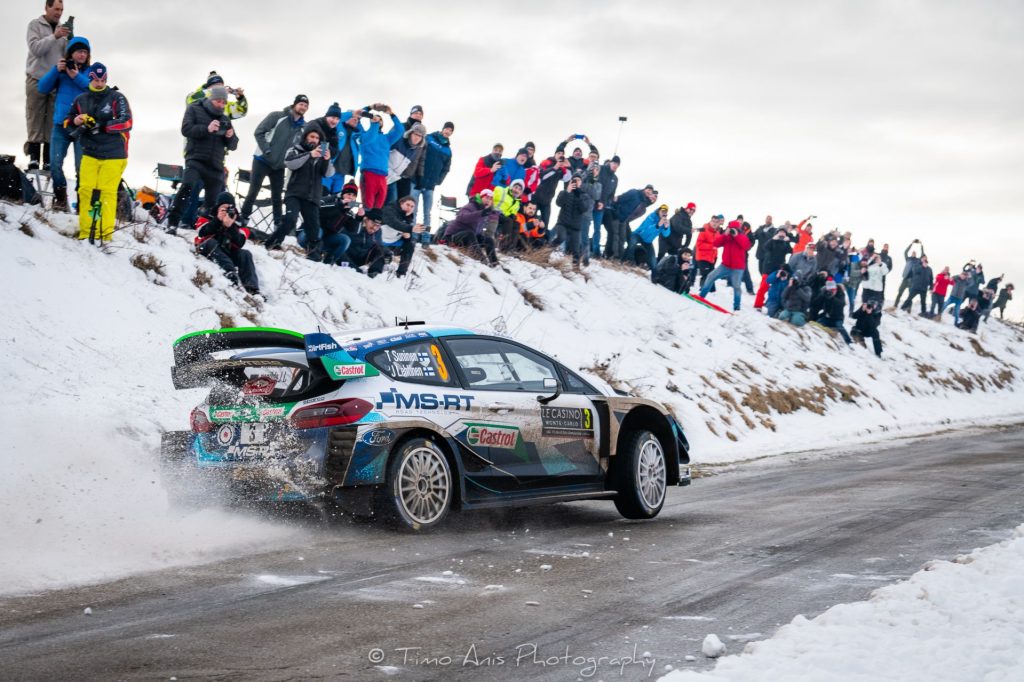
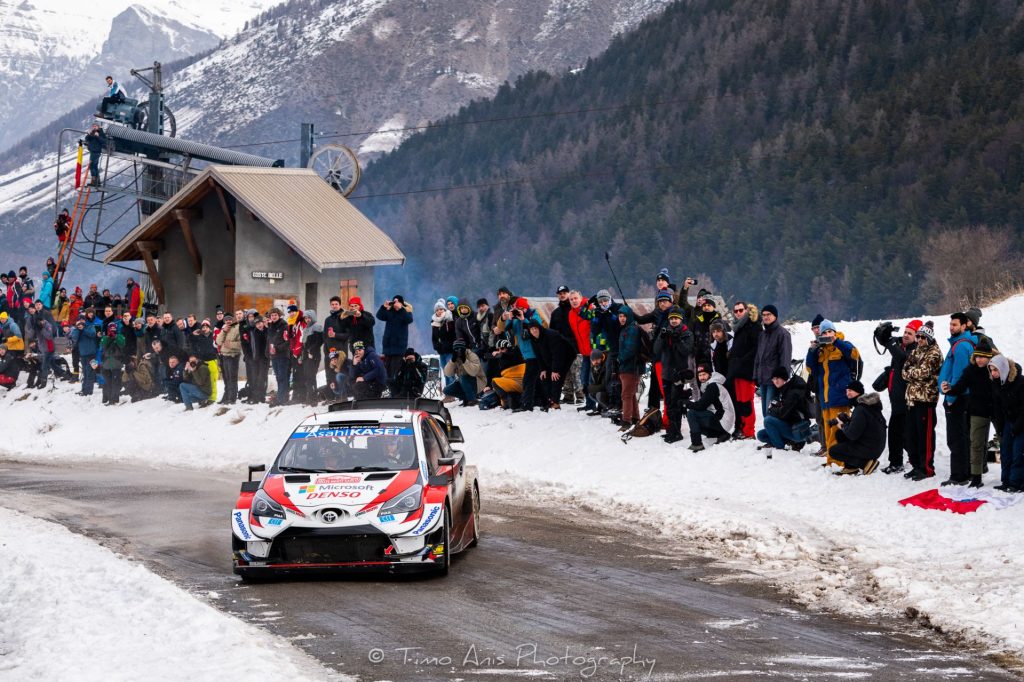
f-stop: What do you usually carry with you, and what are your essential pieces of non-camera gear that always go in your bag?
Timo Anis 
On a daily basis, I'm using two Nikon d850 bodies. Those will go along with my Nikkor 70-200 latest lens and Sigma art series prime lenses. All together I have 3 of those (24, 35 and 85 mm). Now and then I use my Nikkor 16 mm fisheye. If I need/want to light up my subjects I use my two Nikon SB 910 flashguns. Until now these have been helping me to produce my work. As I'm working simultaneously with two bodies I need some transmitters. For that, I have some PocketWizard's in my bag. For the remote, I tend to use some carbon lightweight tripod. As the gear that I'm wearing is quite heavy I need to think about my body. For that, I'm using Blackrapid's camera straps system. It distributes the equipment's weight quite nicely and there isn't too much pressure on my lower back. There are different products on the market in that field, but I haven't found anything better, to be honest!
Here's an interesting fact for you. You know all the dust and dirt which flies around when motorsport events are happening. Well, how do you secure your gear? Here's my secret: I use women stocking for it. The thickest you can get. For sure it's the best option on the market at this very moment, at least for me! As for the non-camera gear I always take my portable Lacie 2 GB hard drive, Blackrapid straps and some extra filters with me. For the gravel events where dust is an issue I always take some brush with me to keep the gear clean. I always take some lens cleaning clothing with me. It's the experience. One of the most important aspects of shooting outdoors is your clothing. Like in Monte Carlo rally: you can have temperatures from -10 up to +15. So it's not easy to choose your clothing. I always go a bit lighter and with layers. Then I'm able to change things when the weather changes. As I need to walk a lot, sometimes more than 10 km in a single day, so I need to make sure my body can breathe!
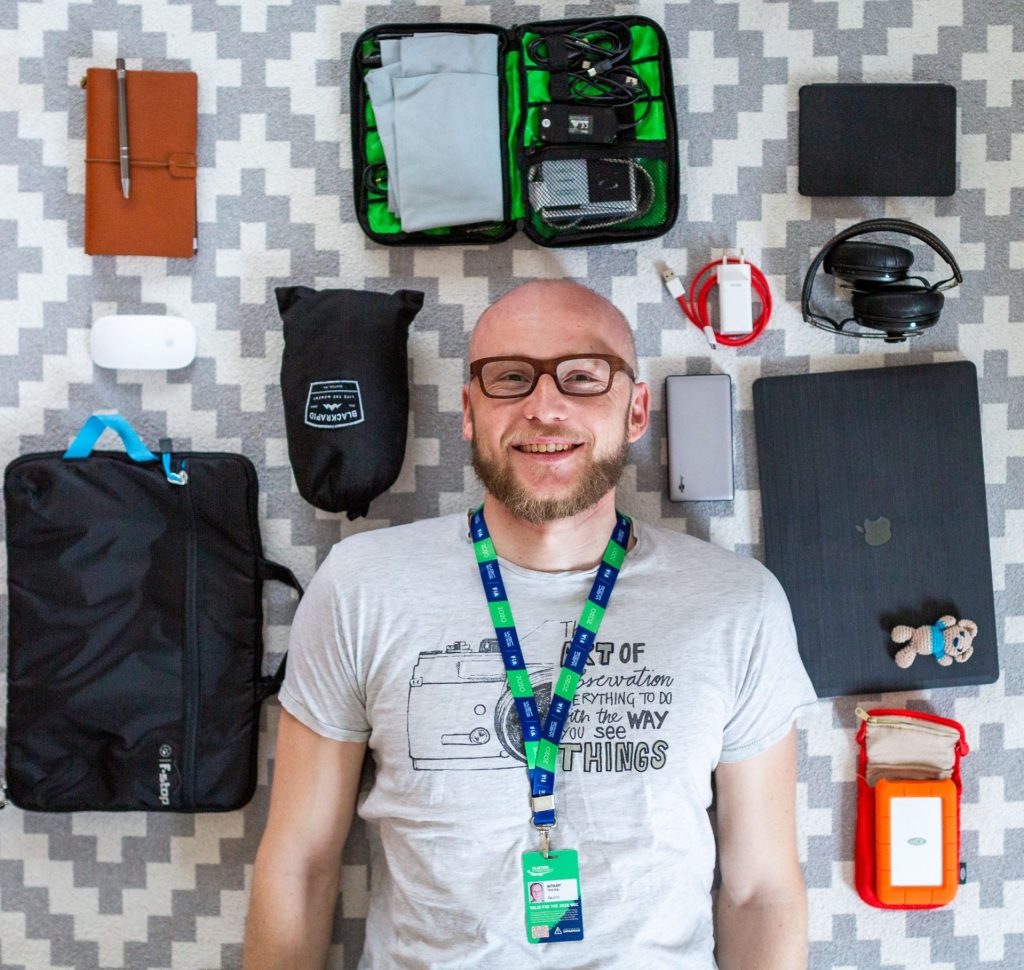
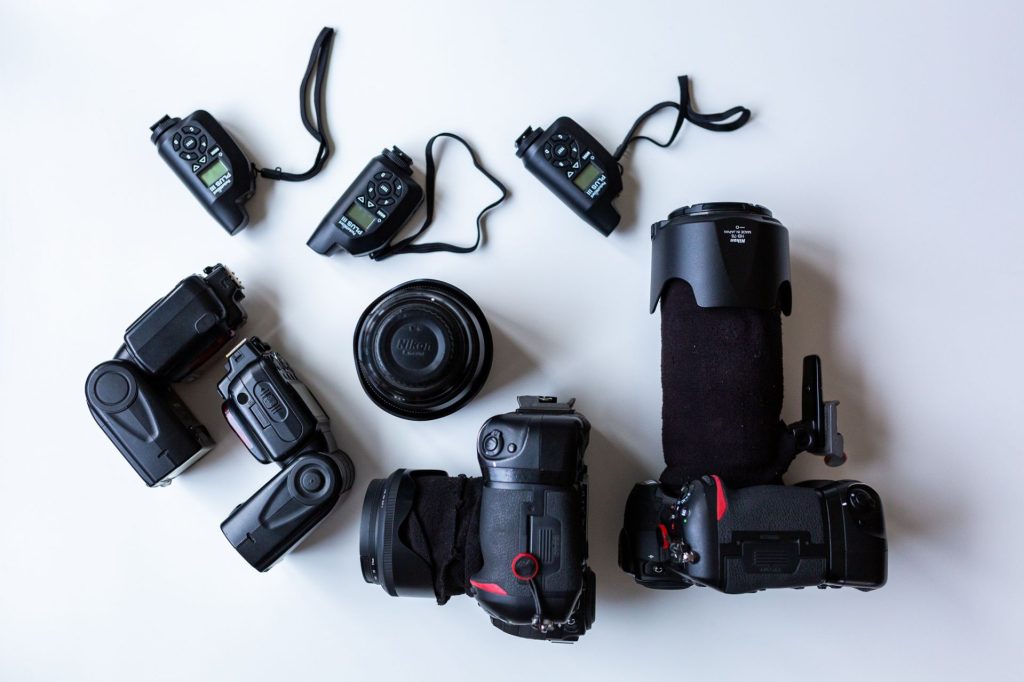
f-stop: Why did you select this gear?
Timo Anis 
As I have been a Nikon user for year's everything has happened very naturally for me. The biggest change for me in recent years has been the fact that I changed all my other lenses for Sigma's art Series primes ones. I have been really impressed by the image quality they do and really pleased with the overall experience. With the gear I have, I can basically shoot anything I wish. I could say only my imagination is the limit. To give you an example: I can shoot motorsport, portrait work, corporate events and etc with all that gear easily.
f-stop: Where do you put all of that gear?
Timo Anis 
I'm currently using f-stop Ajna photo bag. For me, this is the perfect bag. It takes all I need for a shoot, even when it lasts more than a week. One of the major pluses about this bag is also a fact that it is suitable as cabin luggage across the globe. That's a very important factor for me, as I need to travel a lot. All the camera gear, lenses, and transmitters are going into the ICU unit within the bag. For the large pocket which is outside the bag, I tend to put my Blackrapid straps, all the adapters, and wires and etc. Into the top compartment, I tend to put my hard drive, headphones and my kindle. I like to read, but books can be big in their size, so for that, a kindle is a perfect solution!
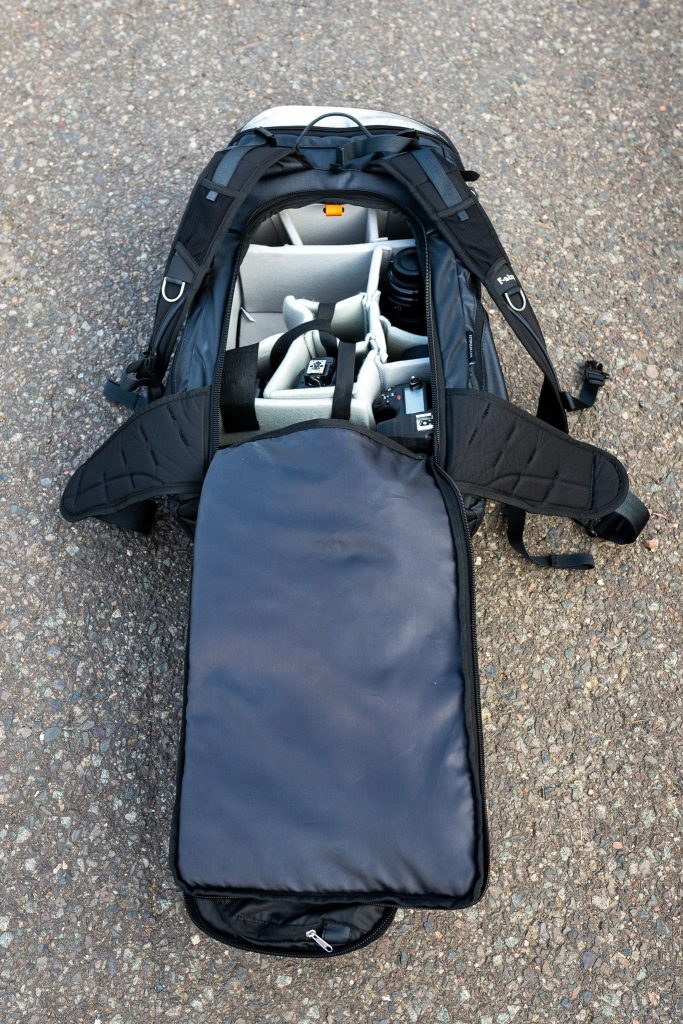
f-stop: What is next for you?
Timo Anis 
I have some portrait work planned to shoot in the next week. Regarding WRC, the next rally will be held in Sweden. This will be run as a winter event and on the roads covered by snow and solid ice. The cars will be using studded tires and it will be a very high-speed event. One of the fastest events in the calendar.
Follow Timo's adventures on Instagram, Facebook, and his website.
Gustavo Cherro is a visual storyteller, and more than 20 years ago, he worked as a photojournalist in different newspapers, magazines, and agencies. Today he is choosing his own stories to develop. He always tries to have a human component in the project, and he usually prefers to work in natural environments, often sports or adventures and other times with a social and human component. These activities can be in mountains, boats, jungles, swamps or in a large city, although the latter, he always prefers to avoid it.
Words and images by Gustavo Cherro

f-stop: You are known for traveling to amazing places, and always being in the field. What was this adventure about?
Gustavo: The Cordón del Plata is the "high mountain" school of Mendoza in particular and Argentines in general. A short distance from Mendoza, Argentina (70 km) we have, in those mountains, one of the few relatively "alpine" landscapes of the country; Where altitude, really big mountains, ice, and verticality are combined. It is a midpoint between the great distances and desert softnesses of the high mountain of the Northwest and the concentrated and granite moles of Patagonia.
Due to the wide range of the assignment, I decided to go alone, to have the necessary times and not keep in mind that someone was waiting for me. I wanted to show the full beauty the place, its geography, flora, and fauna
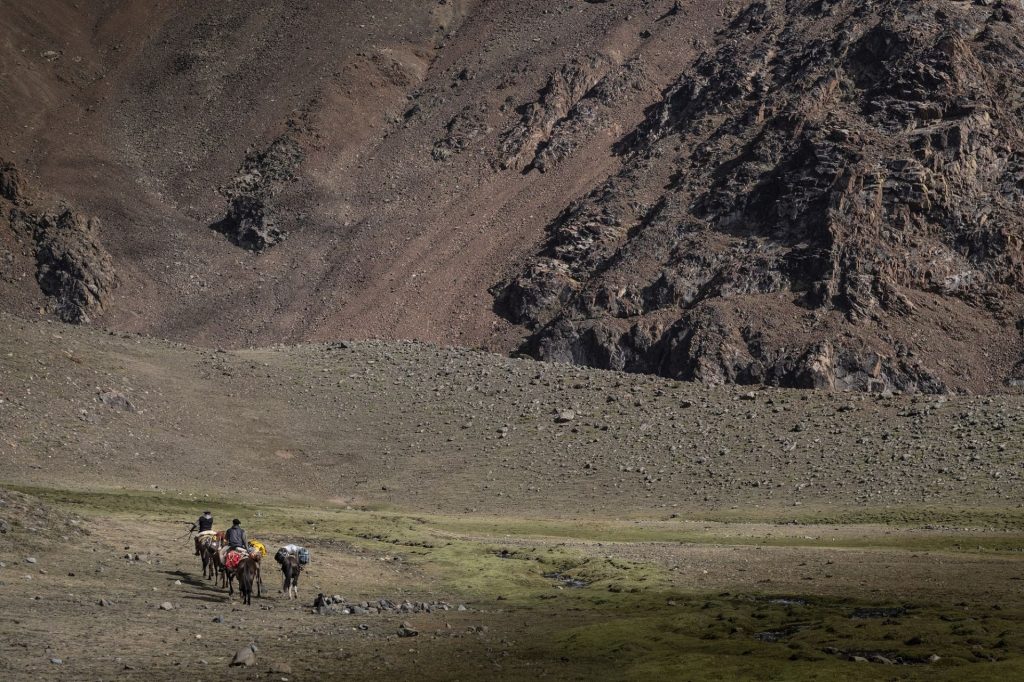
f-stop: What was your biggest challenge during the adventure, and how you overcame those challenges?
Gustavo: The aggressive weather, the height, the great distances, the cold night and its actions on the batteries of my gear and the transfer of all my equipment With respect to the weather, it is important to have the necessary equipment and knowledge, being poorly dressed can be a serious problem, the same happens during the hours of rest and cooking. The height can only be assimilated with the appropriate periods of acclimatization, sleeping, and living over 3000 meters requires that the body gets used to that and it is necessary to take the necessary time. Walking the necessary distances to take the right picture, require only training and patience, and the transfer of my equipment, in this type of exits, I entrust it to my f-stop Sukha. It is spacious, comfortable and safe.
I practice mountaineering from a young age, and I have been working on images in these conditions for many years, but every time I see myself face to face with the mountain, she teaches me how small I am, how small the problems are that I daily They seem huge and all of them are solved with a better point of view and that to avoid problems, we just have to get away from them.

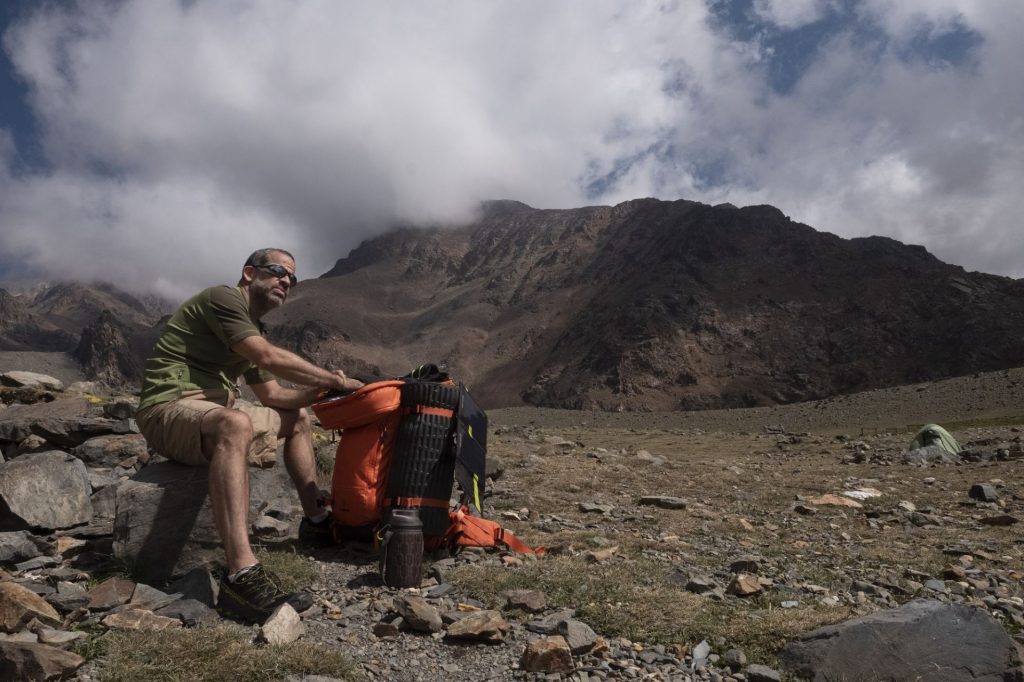

f-stop: Can you remember some of the best moments of the adventure?
Gustavo: I think seeing the wild birds of the place not fearing me and eating centimeters of me was one of those great moments. One afternoon, a young woman appeared with a baby in her arms near the camp, without a backpack, without a tent, without any equipment, left her 2-year-old baby (calculation) and started practicing Yoga, she did it for a while and then disappeared again.

f-stop: For the people that plan to visit Cordon del Plata, can you share some tips and tricks?
Gustavo: Try to travel with the least amount of equipment possible, only strictly necessary, wear the right clothes so that when the worst weather forecast happens, there is nothing left in the backpack to put on, the sleeping bag should be the best you can carry, It is the only space and moment that will give you warmth and rest. Never be alone on the mountain without communication with the outside, always have elements that serve to warn of a problem. Always protect your batteries with the heat of your body, even at night. Drink a lot of liquid and give your body the "necessary" time so that it does not suffer with height
You can find Gustavo's work on his Instagram and Facebook.
f-stop Ambassador Ishaan Bhataiya recently came back from the 2020 Dakar Rally which was the 42nd edition of the event and the first edition held in Saudi Arabia. The event started in Jeddah on 5 January and finished in Al-Qiddiya on 17 January after 12 stages of the competition. He was the first Indian photographer to shoot the grueling Dakar Rally in 2019 and also various rounds of the FIM Cross Country Rally Championship. He has worked with every automobile publication in the country, creating various editorial features and has finally made a foray into the world of advertising. We had the chance to catch up with him after the 2020 Dakar Rally, and talk more about how he prepared for this amazing event.
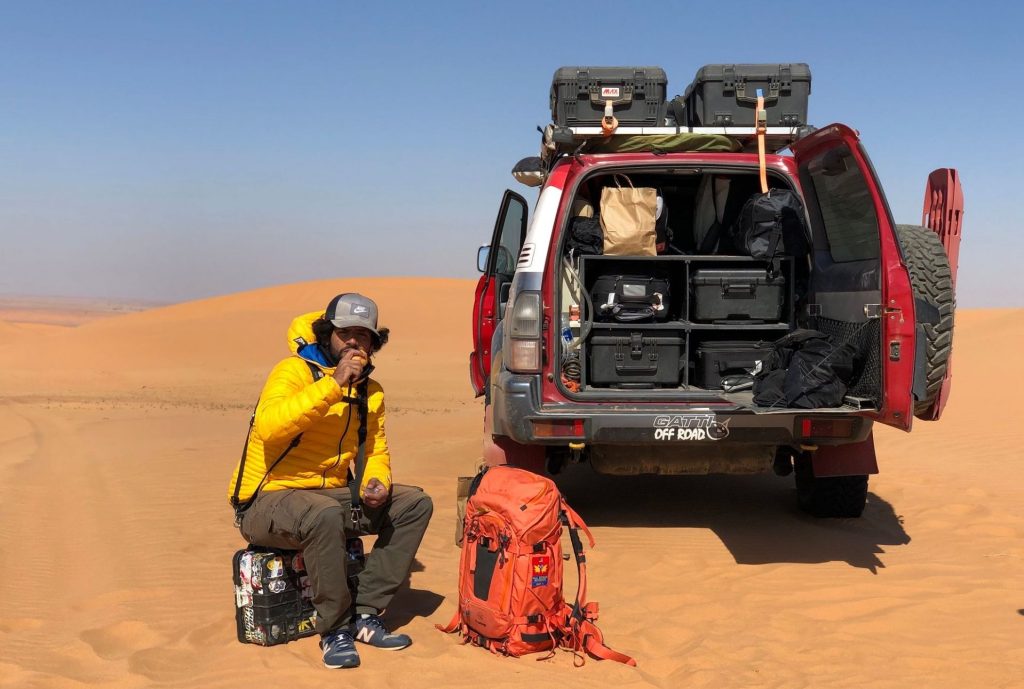
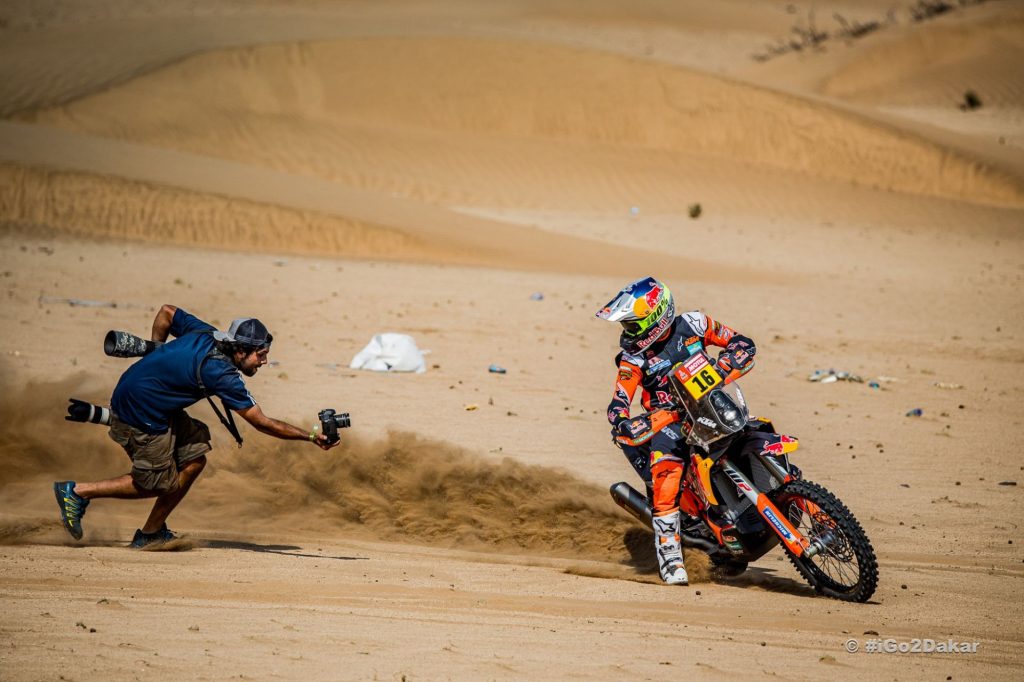
f-stop: This is not your first time shooting the Dakar Rally, can you tell us more about what do you usually take with you for this kind of assignment?
Ishaan Bhataiya 
I’d carry 3 camera bodies, with 3 lenses ranging from super-telephoto to telephoto to an extreme wide-angle one. Three memory card cases with identical Sandisk 32GB Extreme Pro CF cards for each body. Batteries would generally all be charged the night before, so you don’t really need to carry one with you, unless you’ve had a hard night of partying and you know you have 4 spare batteries fully charged, so you’ll swap them out in the morning when you leave the car. That sorts out all your shooting needs. Apart from this, I'd have a Camelbak with about 2-3litres of water, energy bars, some candies, sunglasses, a few layers and a jacket depending on the weather conditions and a few buff’s and such stuff to wrap around your neck and then later to cover your nose when one of the mammoth trucks pass by blowing tons of dust in the air (thankfully though, not in the dunes).
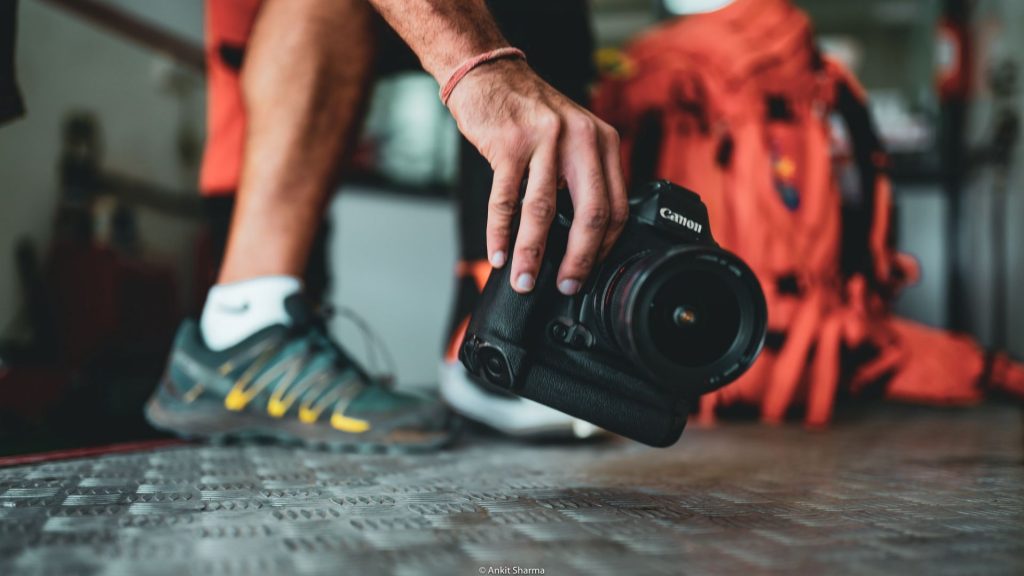
f-stop: What are the challenges that you faced during this event?
Ishaan Bhataiya 
Action Sports, specifically shooting a rally out in the desert does not give you the comfort of having a marked place for all your gear in close proximity. Yes, there is the car that you come in, but it also has 2 other photographers. The main aim is for all three of us to move in different directions, to get different images and not end up with the same shots/composition as the other. Once the stage is live and the first rider crosses you, it’s going to be a continuous chain of bikes, quads, ssv’s, cars and trucks one after the other, and the only significant break you’d get would be between the bikes and the cars, or between the fast and the really slow competitors. In such a case, it's definitely not feasible to leave your place of shooting, to go back to the car to pick up those extra memory cards, or water or even an extra battery/lens. So, it all has to be on you at all times.
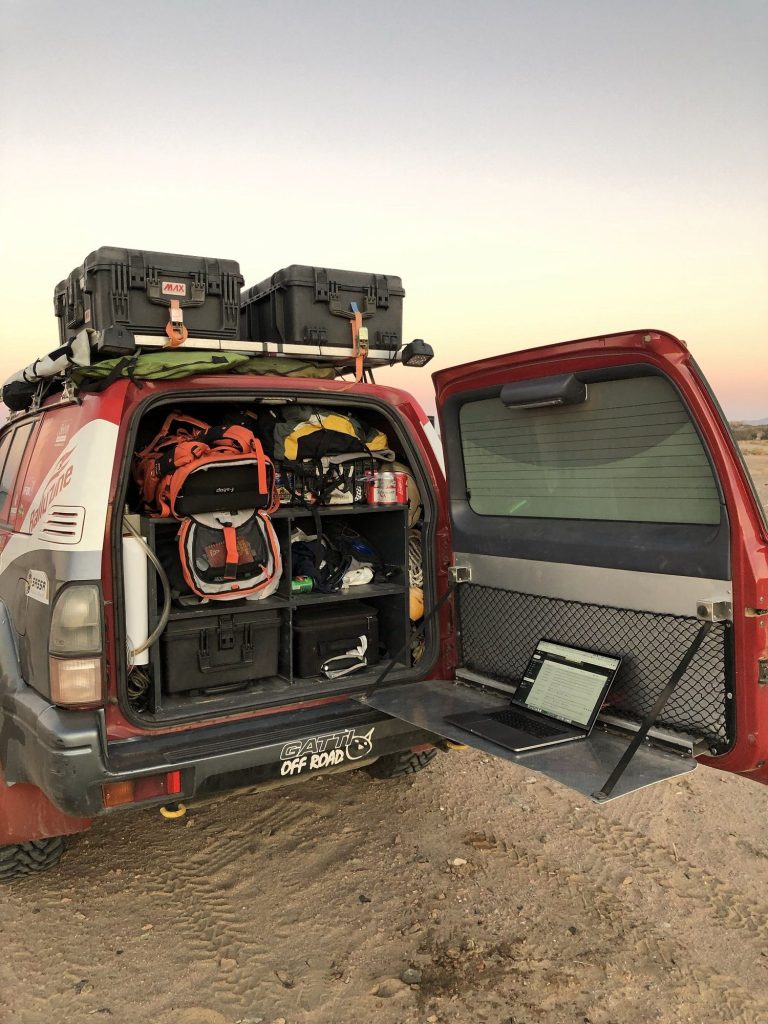
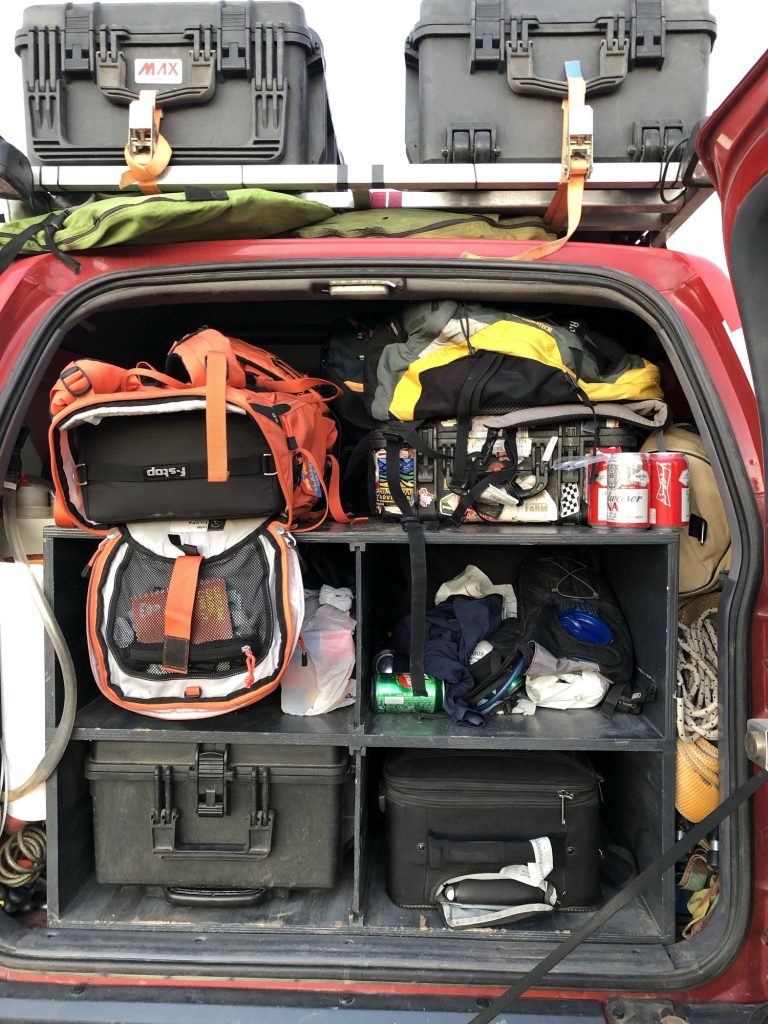
f-stop: You mentioned that you carry 3 bodies and 3 lenses with you at all times, can you tell us why?
Ishaan Bhataiya 
Typically a rider/driver stays within shooting range for some seconds on an average, with 3 bodies with 3 different lenses, you maximize your possibility of making different shots of that rider and you normally choose places to shoot accordingly.
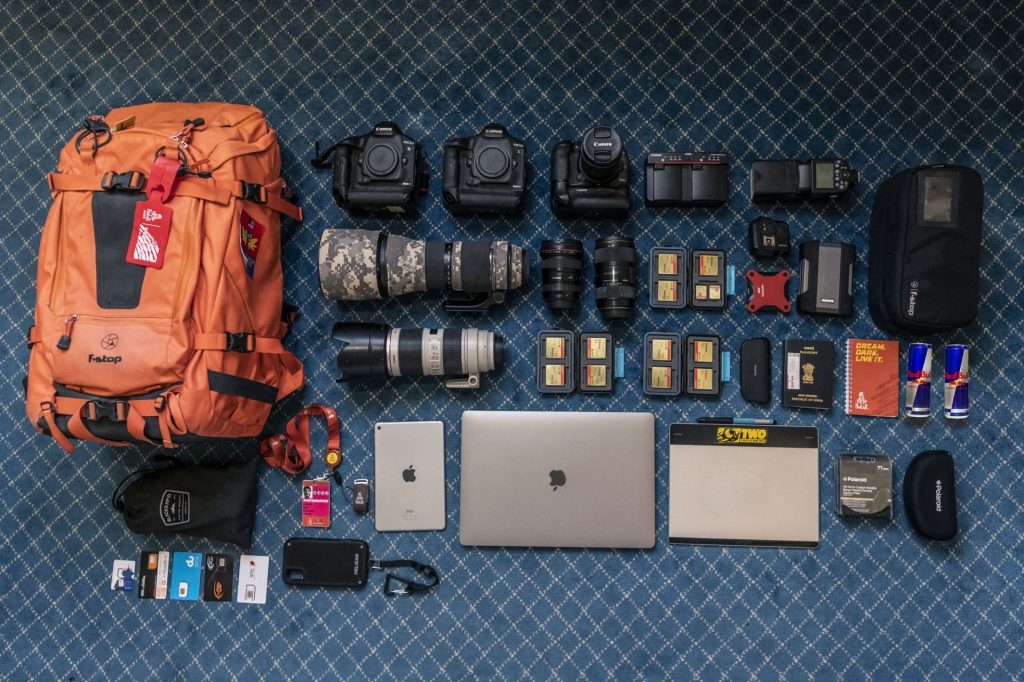
f-stop: Can you walk us through your gear and tell us what did you carry inside of your Tilopa, and also tell us why did you pick this specific set of gear? What else do you carry in the pockets?
Ishaan Bhataiya 
I had 2xCanon 1Dx Mark2, Canon 7D Mark2, Canon 10-18mm, LP-E19 Battery Charger, External Flash and Trigger, Tamron 150-600mm Sport G2, Canon 17-40mm, Sigma 18-35mm, Sandisk Extreme Pro CF Cards, ADATA SSD, ADATA External HDD, Large Accessory Pouch, Canon 70-200mm, Sandisk Extreme Pro CF Cards x2, Sandisk Memory Card Reader, Passport, Notepad, Red Bull, Blackrapid Sport Breathe, Dakar 2020 Accreditation, Pen Drive, iPad, MacBook Pro, Wacom Intuos, Polaroid Filters, Polaroid Sunglasses, SIM cards, iPhone X Pelican Case. Almost all of the camera equipment goes into the XL ICU inside my Tilopa, accessories like filters, camera straps, hoods, lights would go into the Large ICU inside a hard-case. The side pockets normally are pretty empty, I’d stock an extra Ortholite sole for my shoes and some extra buffs, scarves in the other pocket. But usually, I keep them quite empty, cause the car has only limited space for all the bags, and you’d like a tall bag, not a fat one.
I selected this gear cause typical to shooting action sports are really challenging environments and locations which could take a toll on the cameras. With top-of-the-line camera bodies, you negate that risk cause they’re sturdily built with super-strong magnesium alloy bodies and weather-sealed lenses. Multiple bodies so that changing lenses would not be a thing I’d be concerned with, cause in such sandy and dusty conditions changing lenses is just a nightmare and you’d end up with more damage than Good sometimes. The top (outside) pocket would have an extra phone, a notepad, pen, earphones, microfibre cloth, keys, zip ties, and maybe some batteries or things I need to store for the time being and also an iPad. The inside pocket would normally have more important things like my passport, documents, Identifications cards, SIM cards, pen drives, another note pad, dog tags, lens cleaning solution and cloth, stickers.
f-stop: Now when the Dakar Rally is finished, what's next for you?
Ishaan Bhataiya 
India is going through an interesting phase with all the politics and laws being passed in the country. Jammu and Kashmir have always been at the top of the list of states being affected by these actions, so much so, that there was a 145 days+ internet shutdown in J&K. Amidst all of this the Kashmiri youth are finding their solace, 'mental peace' and spending their time productively by going out and skiing on the pristine slopes of the Himalayas in Gulmarg, and I've been told that they're rather good at it, so I'm heading down to Kashmir to shoot this Skiing story in about a week. Post that would be some more supercross, track racing and digital campaigns leading up to the Auto Expo in March.
Follow Ishaan's adventures on Instagram and Facebook.
LOOK FOR LAYERS
When atmosphere gets down in between the layers of the landscape, it shows off the distances between them and that itself can make for a very compelling image.

BE PATIENT
Wait it out sometimes! Atmosphere tends to come in waves, and it may well be that if you really like forms of your composition, wait for the next wave. It could bring something even better than you’ve already seen.

LOOK FOR STRUCTURE
Some types of atmospheres, especially low clouds, can often form into very sculptural elements that add shape to your compositions. Look for those and look out for the ways in which they interact with the rest of the environment.

THINK FAST
Atmosphere can really change an environment as it moves through an area. Sometimes the layers change giving different levels of visibility and sometimes the structure changes. In either case, you may want to adjust the composition, so be ready to think quickly and adjust frequently.
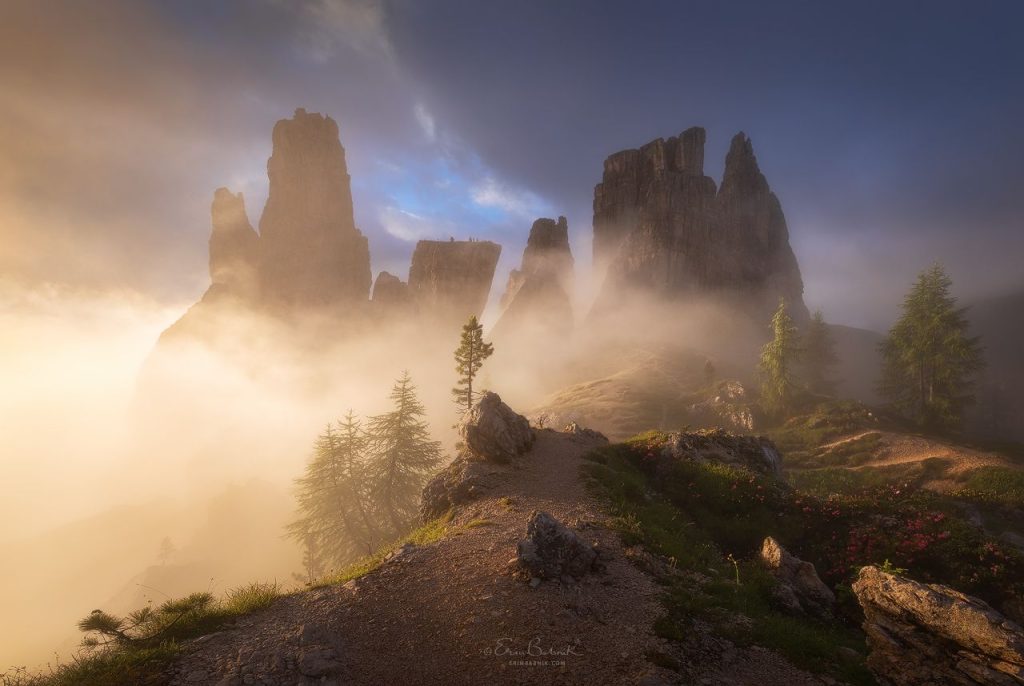
BE PATIENT
Wait it out sometimes! Atmosphere tends to come in waves, and it may well be that if you really like forms of your composition, wait for the next wave. It could bring something even better than you’ve already seen.

LOOK FOR INTERACTION
Sometimes atmosphere has a way of intermingling with mountain peaks or trees or elements in your frame in a way that tells a story that wouldn’t be there otherwise. Keep your eye open for such opportunities and ask yourself what that interaction means for you. Try to tell a story with your image.
1. LIGHTING IS THE KEY!
Make sure to have good lighting while you are making portraiture. The light can be natural (ambient) light or artificial light. It all depends on how you want the end product to look.

2. GET THE RIGHT BACKGROUND
The background can change the mood of the photo, so make sure to have it right.
A white background is a good start, or you can create your own background pattern by adding shadows that fall on the background. Another option is to let the shadows be a foreground pattern that fall on the model.

3. SEQUENCE SHOTS
Take sequence shots to show the personality of the model.
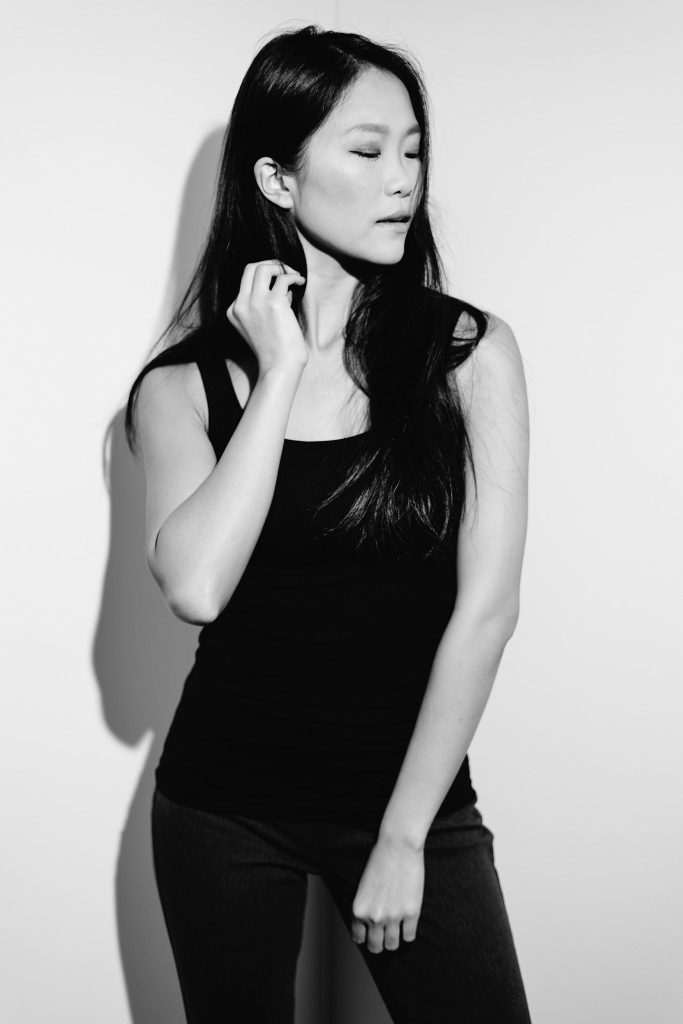
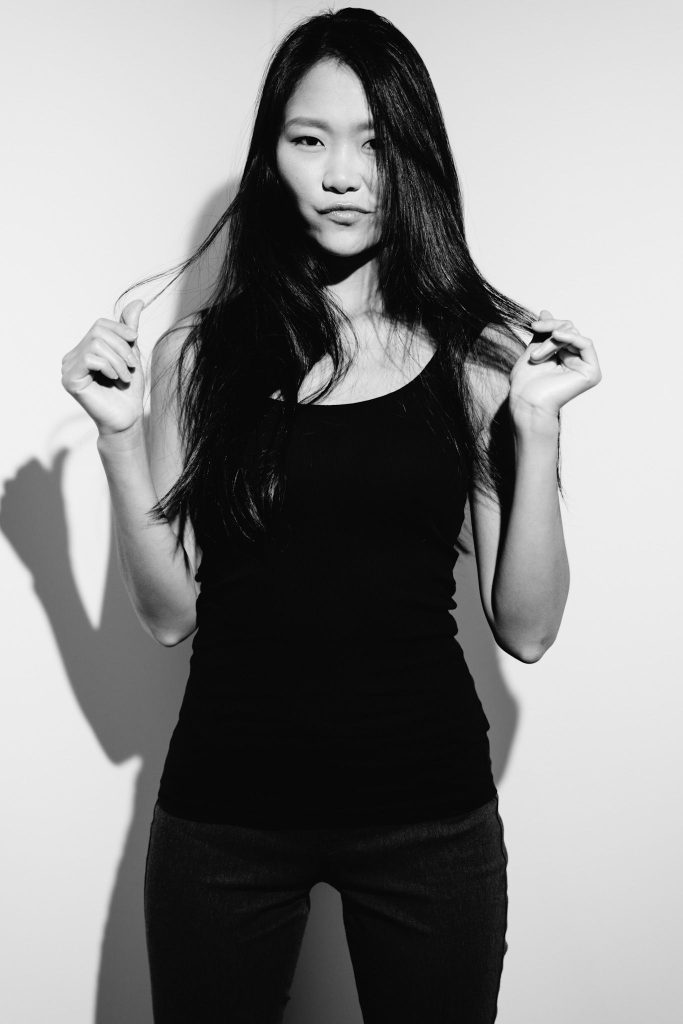
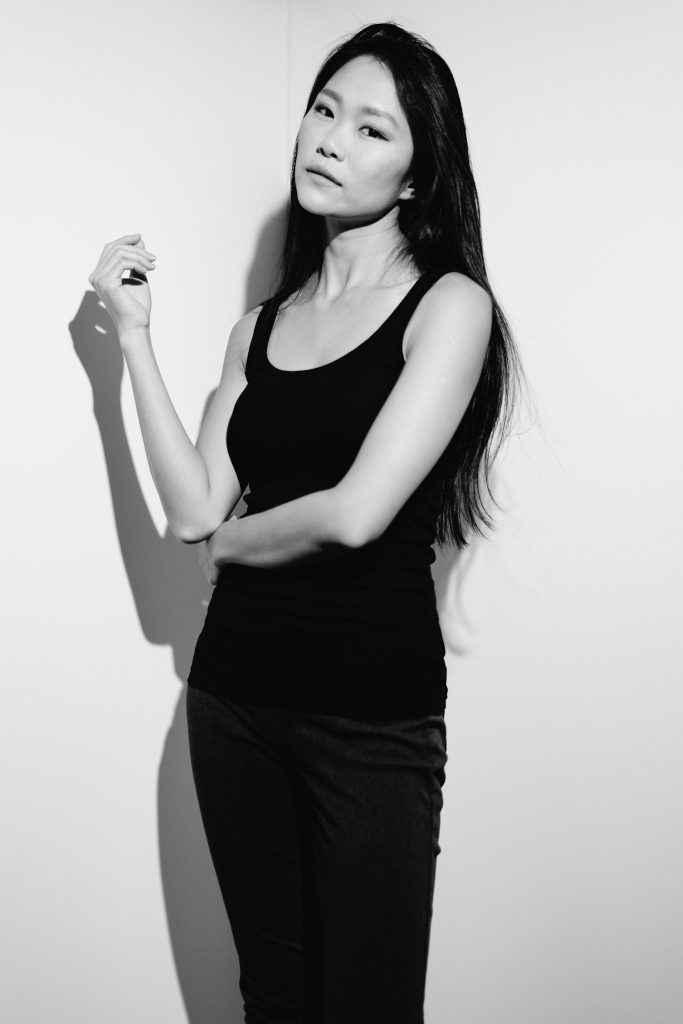
4. FOCUS ON THE EYE THAT IS CLOSER TO THE CAMERA
This will make the eyes stand out. Also, focusing on the nearest eye will keep the "out of focus area" behind the point of focus.
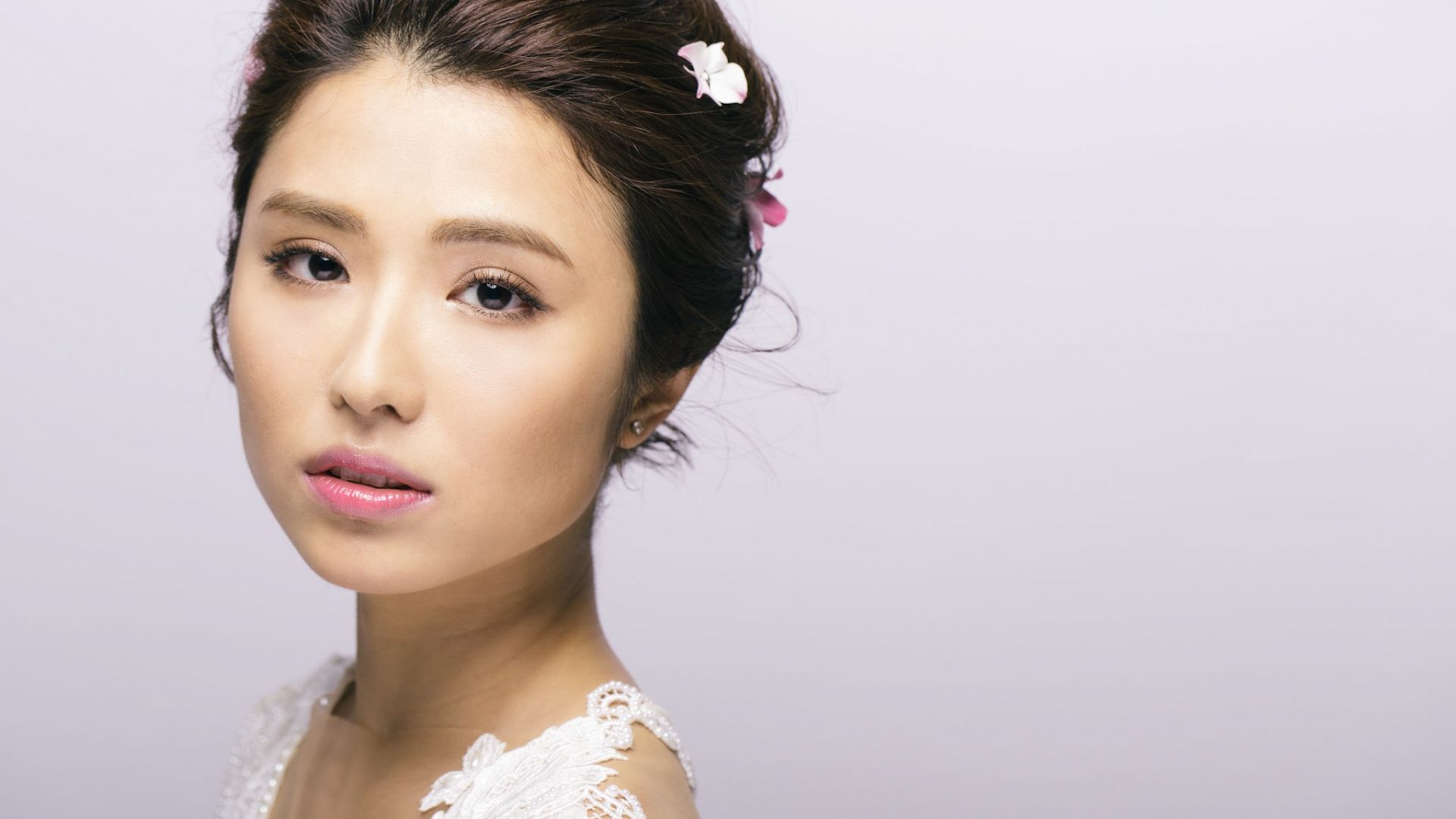


Henry CK is an artist, photographer, and filmmaker based in Hong Kong. He has been attracted to photography since childhood and taught himself to be a professional photographer through self-mentorship. Henry CK specializes in the music and entertainment industry, creating images and videos for emerging artists, bands, and musicians.
Attending a workshop can be one of the most productive ways to push your photography to new heights. f-stop Ambassador Erin Babnik runs workshops in stunning locations that read like a bucket list of picturesque places to visit for landscape photography. We caught up with Erin to hear about her path into photography, what it takes to run these workshops, and her pick of essential gear to bring to a workshop.

Can you tell us a little about yourself, and how you got into photography?
Immersion in the visual arts has been the one constant in my life, including extensive formal education in various studio arts, graphic design, and in the history of art. Before I decided to pursue my photography career full-time, I was an art historian specializing in ancient Greek art. I needed to produce photographs for my dissertation and also for the classes that I was teaching while I was in graduate school, so it was then that I first began to travel widely with camera equipment. I photographed thousands of artworks inside museums and went to great lengths to photograph archaeological sites all around Europe and in the Middle East, which was expensive and time-consuming. I eventually started funding my trips and equipment upgrades by getting into stock photography and assignment work.
As I began devoting more of my time and resources to improving the quality of my photographs, it became increasingly clear to me that photography was capturing my imagination and my heart. I was still very passionate about art history, but I knew that I had found an even more inspiring calling that needed to be a larger part of my life. Craving more immersive and creative experiences, I began going on photography trips into wilderness areas, far from any of the cultural treasures that had always given me a reason to use my camera. During my college years I had drifted away from the outdoors activities that had been a great source of enjoyment for me earlier, so returning to wilderness areas with photography in mind became a major tipping point in my life. I could not get enough of it, and I finally admitted to myself that I was on course to a career change.
The idea of leaving academia was very difficult for me and only became a serious plan when I realized that I would be able to retain everything that I truly enjoyed about it. As a photographer, I would still be able to teach, to write, to lecture, to travel widely, and to draw upon my formal education in art and art history. Teaching photography workshops brings all of these interests together for me at once, which is why I have made teaching a focus of my career as a full-time landscape photographer.

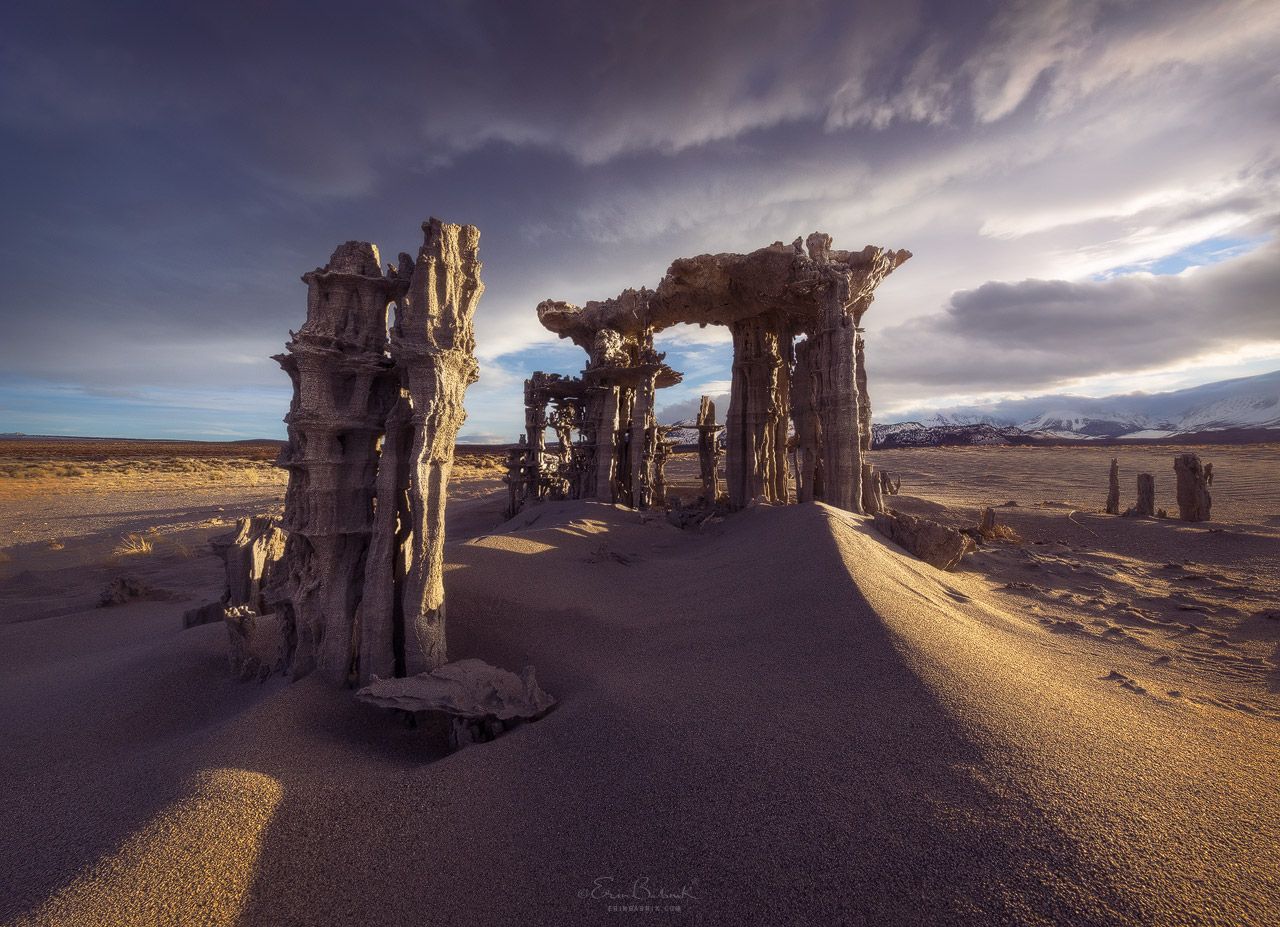
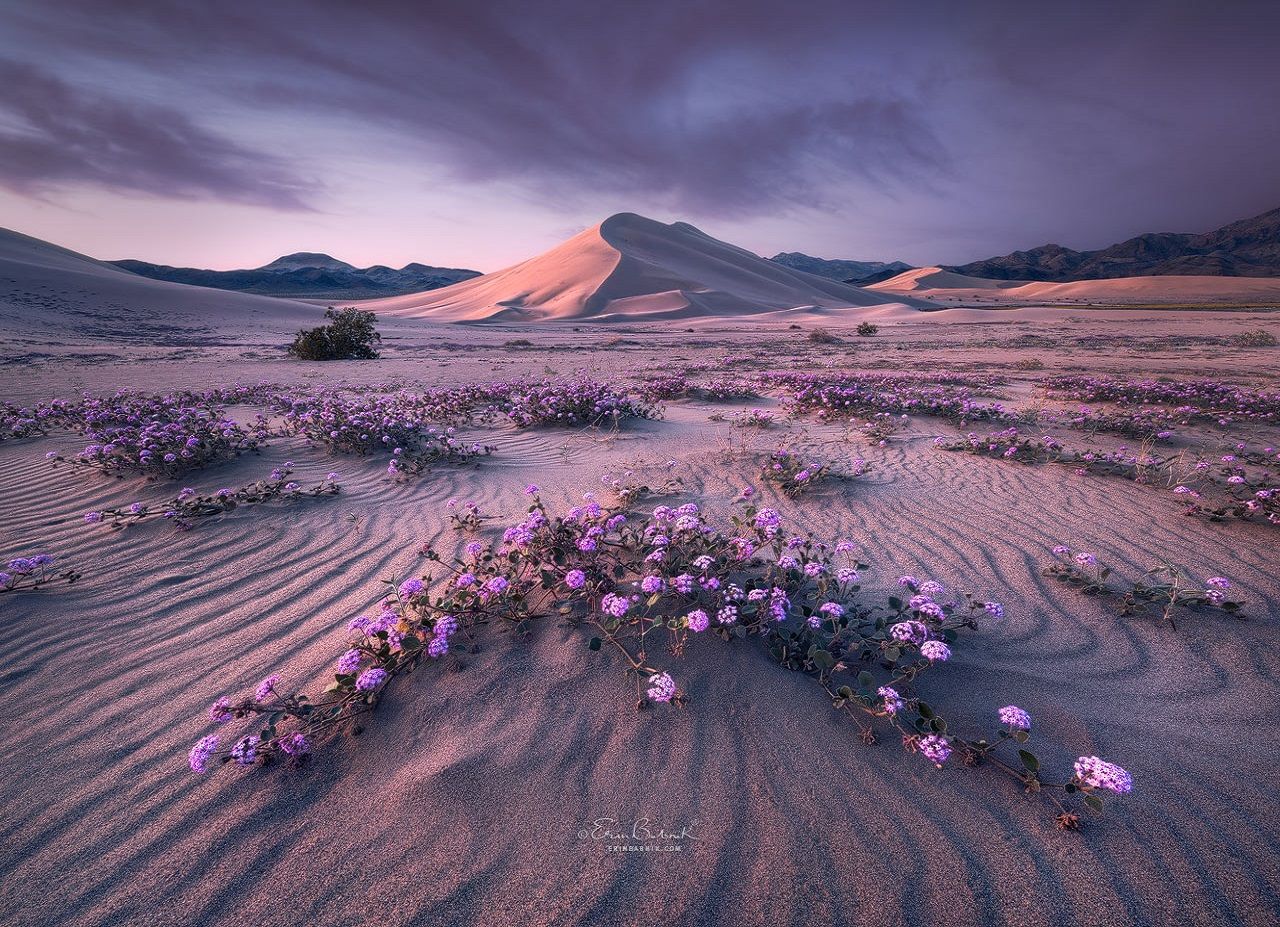
Your talks and articles have made you one of the most notable voices among the current generation of landscape photographers; can you tell us a bit more about how you bring your ideas about photography to the workshop experience?
The ideas that I express in my writing and public speaking become a part of the workshop experience in a variety of ways. Most directly, they come out in the seminars that I schedule into most of my workshops to supplement the in-field instruction. Depending on the length of the workshop and the location, I include anywhere from one to four creativity seminars in addition to my usual post-processing instruction sessions. The topics vary, but they have included seminars on composition, on the history of landscape photography, on the creative process, and on portfolio development. I first started integrating these seminars into my masterclass series, and they were hugely successful, so now I have made them a regular part of my teaching programs.
The other outlet that I have for sharing these ideas is through impromptu discussions with students during the course of a workshop. Many of my workshop participants have questions about articles that I’ve written or else ask questions that relate to what I’ve written, and the resulting conversations tend to be enormously productive. I really enjoy discussing all aspects of photography and its relation to other arts, and it is always very rewarding to hear that my students have found these discussions helpful and inspirational.

Like all things in life, there must be some challenges while planning a workshop. What do you see as the biggest challenges to delivering a successful workshop?
Logistics probably present the most challenging problems to solve when planning a workshop. In order for everything to run smoothly, I have to consider a huge range of issues that all need to work together: where we go, what conditions to target, how we will get there, when and where people will eat and sleep, how much physical activity the average person can handle in an outing and how they might feel the next day, how much everyone can carry, and how to store what they cannot carry. I invest an enormous amount of time into planning a workshop in order to ensure that everyone has a great time and is able to make the most of the photographic opportunities and instruction.

You've been to some stunning places to shoot. How do you pick your locations for workshops?
Most of my workshops feature unique locations that I discovered through my own exploration, in combination with locations pioneered by some of my co-leaders, and also with a few classic areas included. I try to choose locations that are not only highly photogenic but that offer a good range of options for being creative. Even the more classic areas that I feature are of this sort, such as the Mesquite Sand Dunes in Death Valley, an area that has been highly photographed for decades and yet provides endless opportunities for photographers to create unique and rewarding photographs. My extensive exploration of the Dolomites has turned up dozens of locations where my students can experiment with a variety of focal lengths and compositional styles all in one spot, making my Dolomites workshop series extremely popular. Not only do my workshop participants appreciate such versatile locations, but I am able to stay inspired myself by returning to these areas that always seem to have something new to offer.
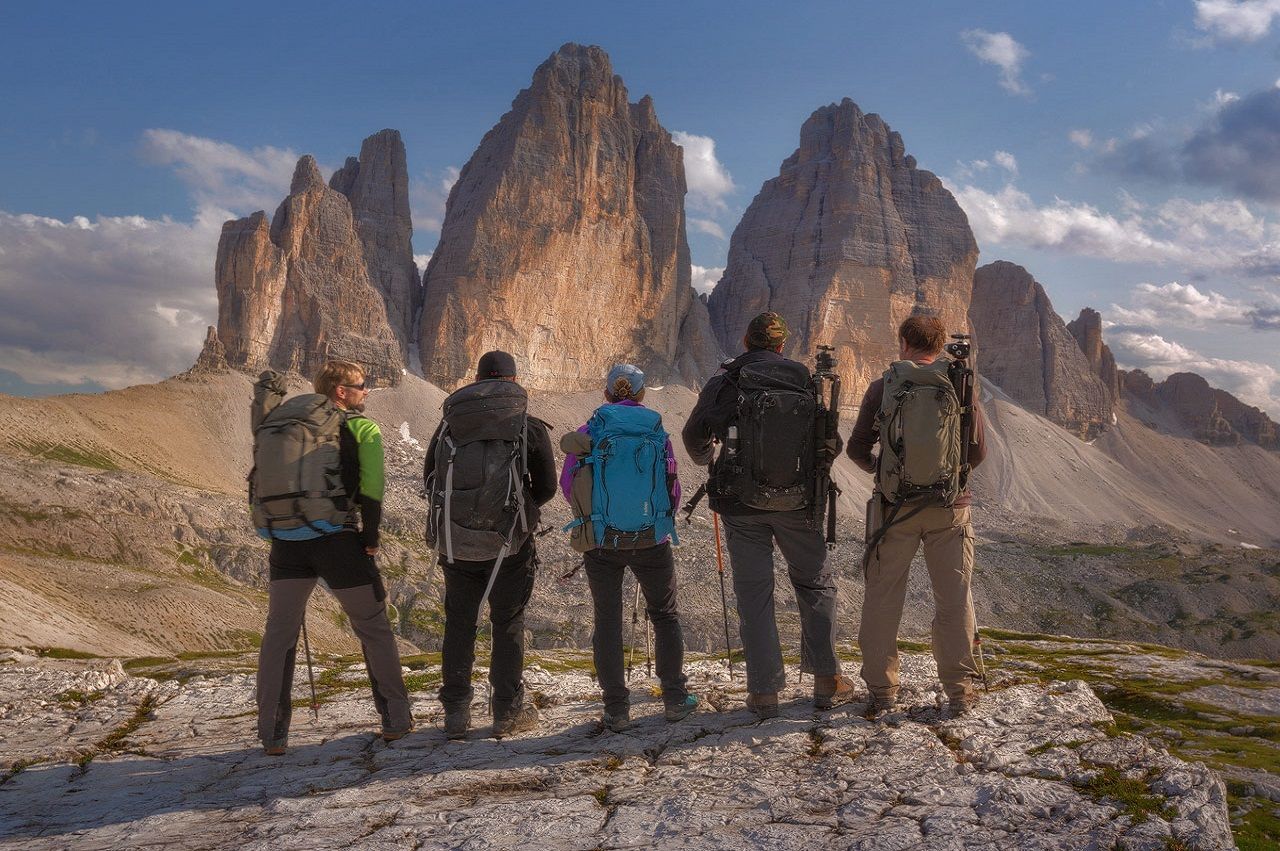
For participants coming to shoot in those locations, what are your top picks of essential items that they should pack or bring?
Because my workshops are based in wilderness areas, we are usually doing some walking or hiking to reach them. A walk might be anywhere from fifteen minutes to two hours long, depending on the workshop, but regardless we are not usually right next to any vehicles or buildings and therefore need to carry whatever we will need to use while we are out in the field. A good photo backpack is therefore an absolutely essential item, and I always recommend that participants bring one that can carry more than just their camera gear and that stands up well to the elements and to whatever rocks or damp surfaces may be beneath a backpack when it is on the ground. For those workshops where we are backpacking to mountain huts or are even just doing longer day hikes, I also consider trekking poles to be essential items because they make the hiking much easier and improve balance on uneven terrain. Of course there are a lot of standard items that I recommend in addition, such as a tripod, a headlamp, and protective clothing, but the choice of a good backpack and trekking poles makes it easier to carry all of those items comfortably and safely. Aside from these essentials, I always advise my participants to bring their spirit of adventure!
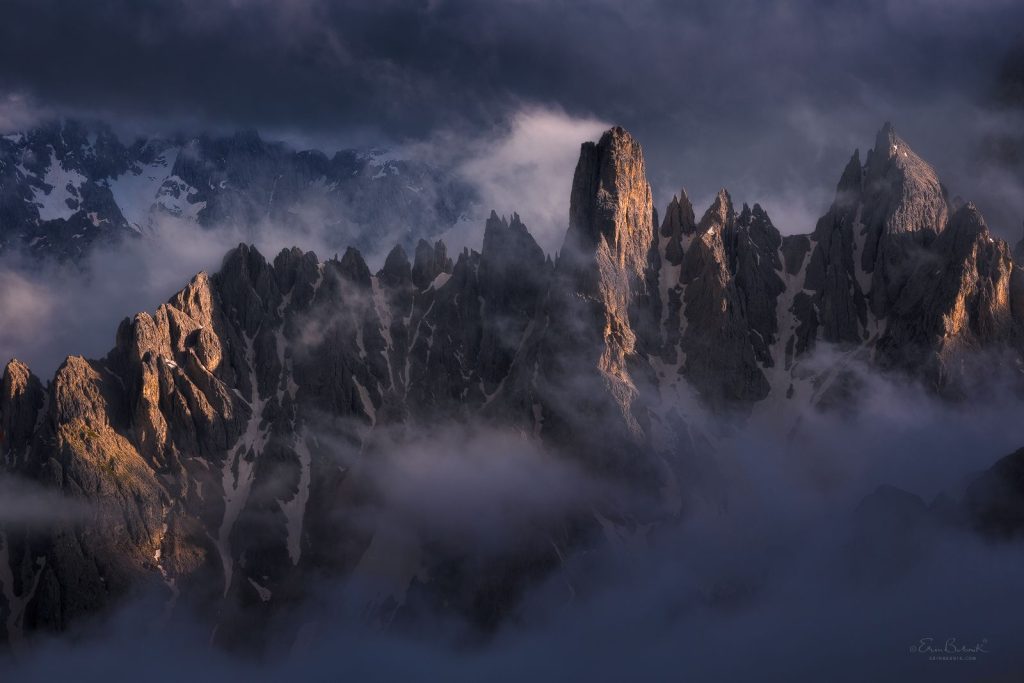
Every year Red Bull Rampage produces some of the most jaw-dropping images of mountain biking. f-stop Icon Scott Markewitz breaks down his gear and talks us through what is going in his bag for the Red Bull Rampage, along with some shots taken with that setup over the years.
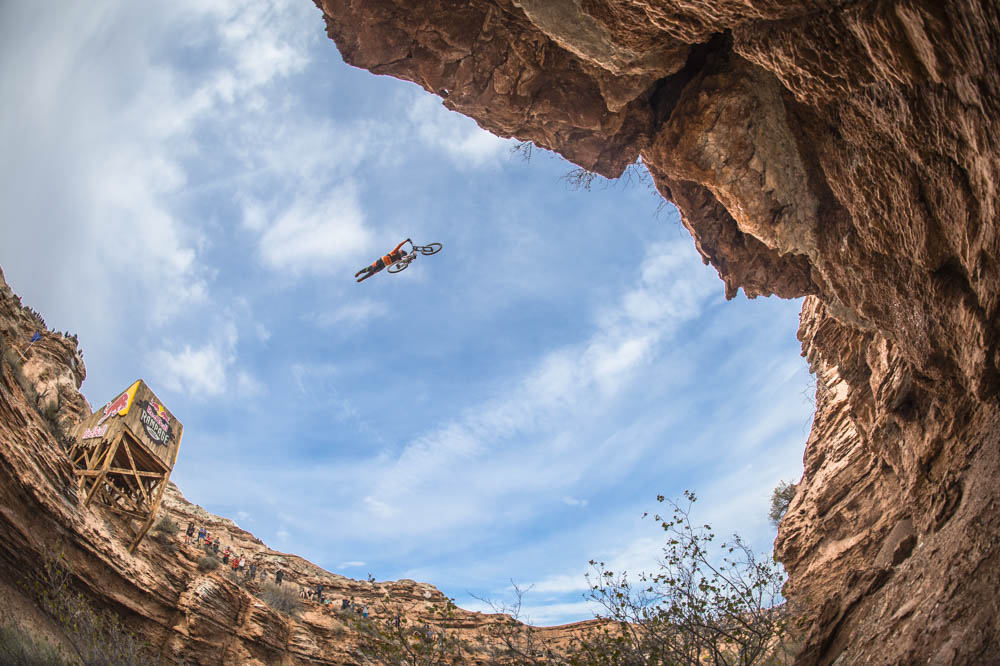
Words and photos: Scott Markewitz
In 2018 f-stop Icon Scott Markewitz documented the Red Bull Rampage as the Event also moved to a new zone with riders building entirely new features and lines. Just like the riders, the photographers have to navigate the vertigo-inducing terrain to find their angles on these new features. In order to navigate the Rampage course and still carry a two-body setup, Scott grabs the slimmest of the Mountain Series packs for this.
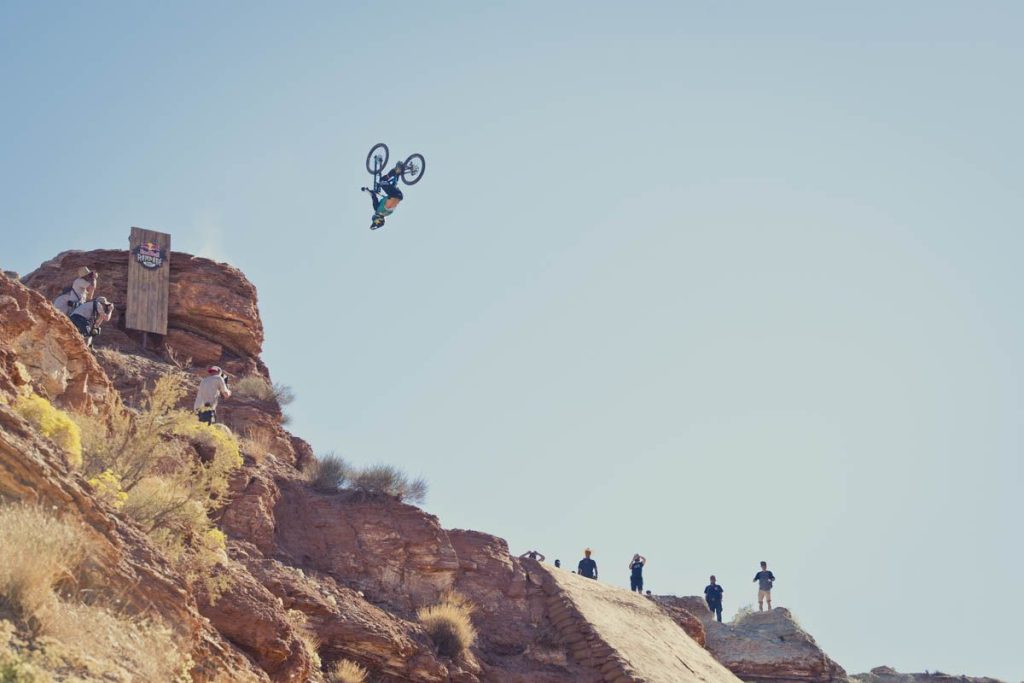
Kurt Sorge sends a backflip over the media pack at last year's Rampage, shot with the trusty 70-200.
The Rampage is one of the most incredible events in action sports. It brings together the world’s best freeride mountain bikers for a contest and a show of massive jumps and insane riding skills on the rugged terrain around Virgin, Utah. I’ve been to every Rampage since the beginning and it’s definitely one of the shoots I look forward to every year
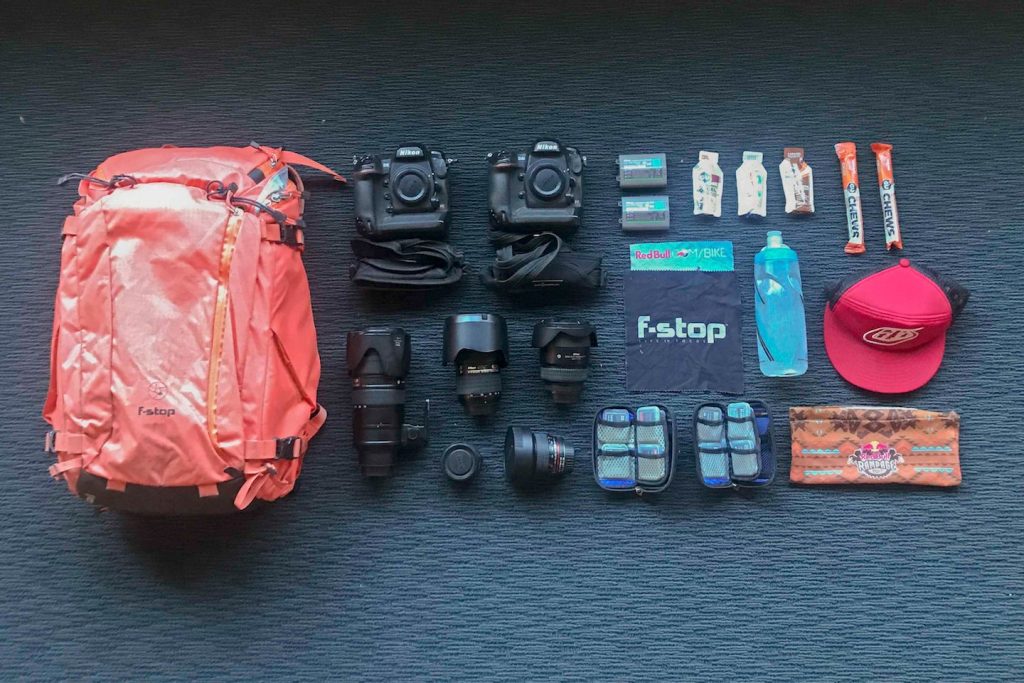
On the road to Rampage 2018: Packing two full frame pro body DSLRs, 4 lenses, and daily essentials in the 32L Lotus camera bag to stay agile working shooting among the Utah cliffs of the Red Bull Rampage course.
One of the challenges of photographing the Red Bull Rampage is moving around and getting set up to shoot the riders during the event. The venue is spread out and every athlete takes a different line down the mountain. There’s not much time between runs, so you have to have to know where you’re going to shoot and move fast between each run to get in place. I like to have a pack that is large enough to carry everything I need for the event but light and agile when I’m running up and down the mountain between shots. For this year’s Rampage, I’m taking a Lotus.
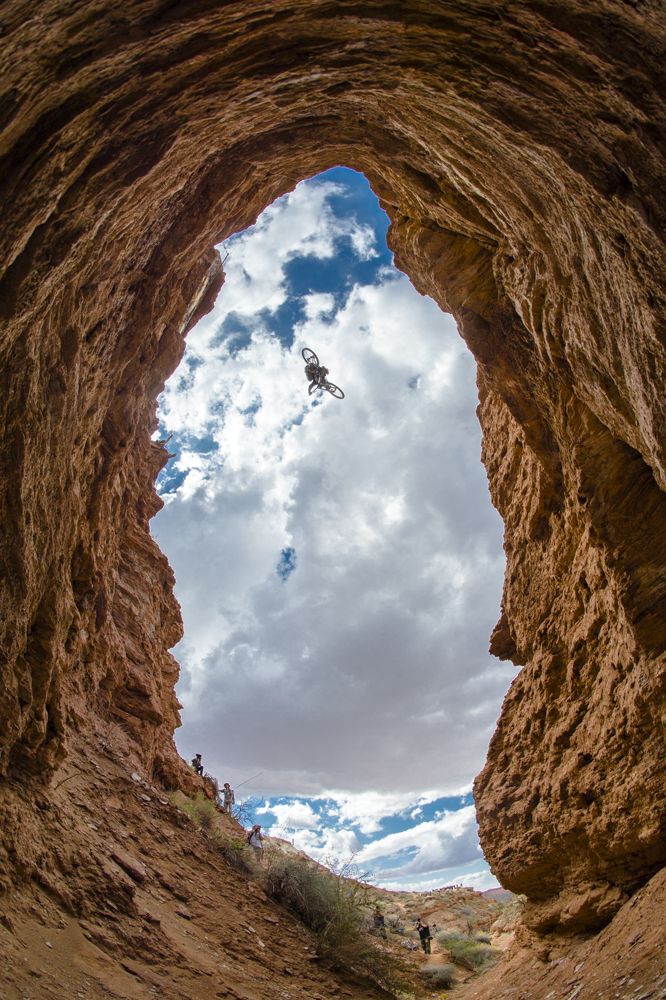
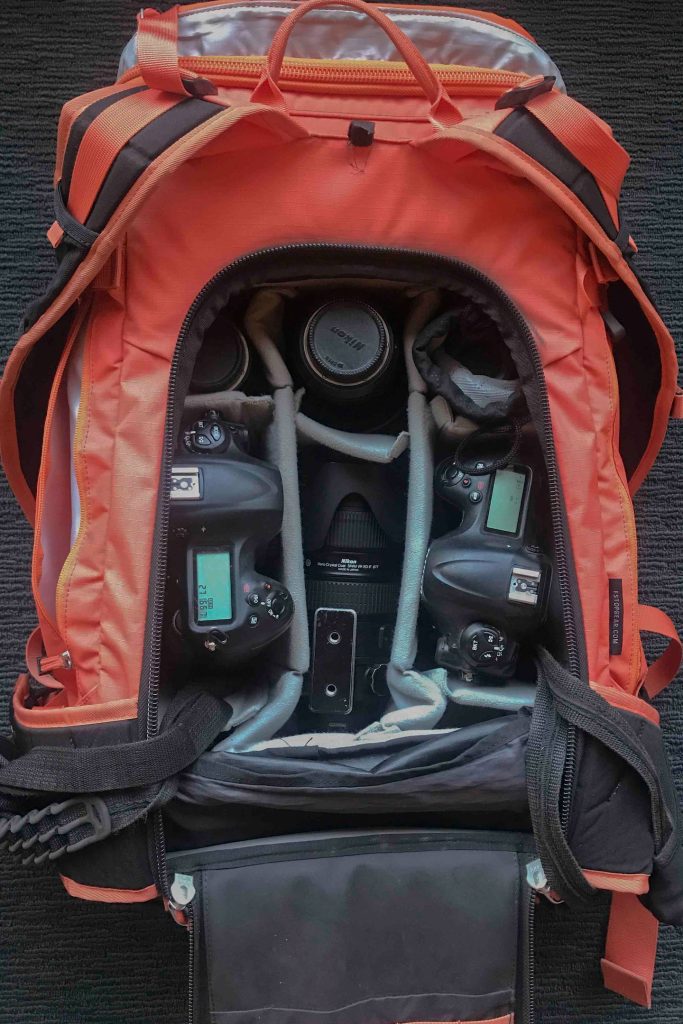
The Lotus is a great mid-size camera pack that still fits a Large Pro Camera Insert but is lightweight and most importantly easy to move around with. This is especially important on an Event like the Red Bull Rampage.
I always have two full-size DSLR bodies in my camera backpack, a Nikon D5 for the majority of my work with a Nikon D4S as a backup just in case the D5 fails. For lenses, I bring a 70-200mm 1:2.8 GII, 24-70mm 1:2.8G, 17-35mm 1:2.8D, 12mm 2.8 Fisheye, a 1.4x converter to extend the range of my 70-200, as well as extra camera batteries, lens cloths and more than enough CF cards for any day of shooting.

Cam Zink doing what most of us would want a parachute for, on his way to 2nd place at Rampage 2017, shot with the 12mm fisheye giving a sense of the wide open space the athlete is launching into.
The Southern Utah desert is hot, dry, and dusty and the sun beats down on you when you’re out there all day. A water bottle is obviously important to stay hydrated, but I also bring a hat, a buff for extra cover, and sunblock (not shown), as well as a few GU energy gels and chews for a quick energy boost when I need it.
It doesn’t seem possible that the riders can go any bigger or do anything wilder, but at every Rampage the athletes continue to push the realm of what’s possible to new levels. I’m really excited to see what they are going to pull off in the future.
It’s going to be another incredible event!
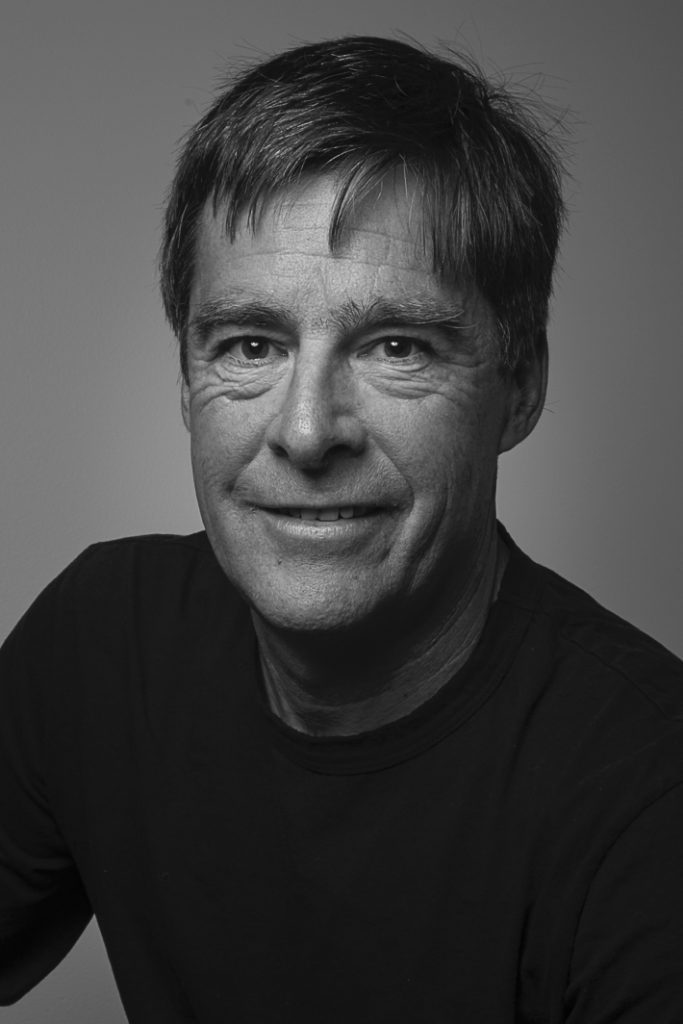
Scott Markewitz is recognized as one of the most influential outdoor photographers in the industry. His passion for photography and the outdoors comes through in everything that he shoots, whether it’s action sports, active lifestyle, or environmental portraits. His images have appeared in advertising and promotional campaigns for many well-known outdoor and consumer brands
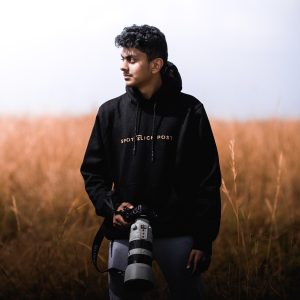
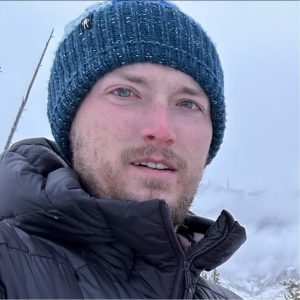
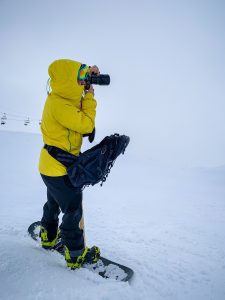
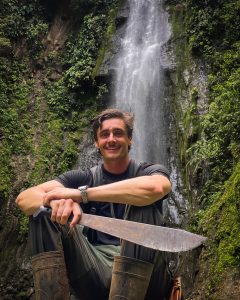
Words and photos by Alex Grymanis
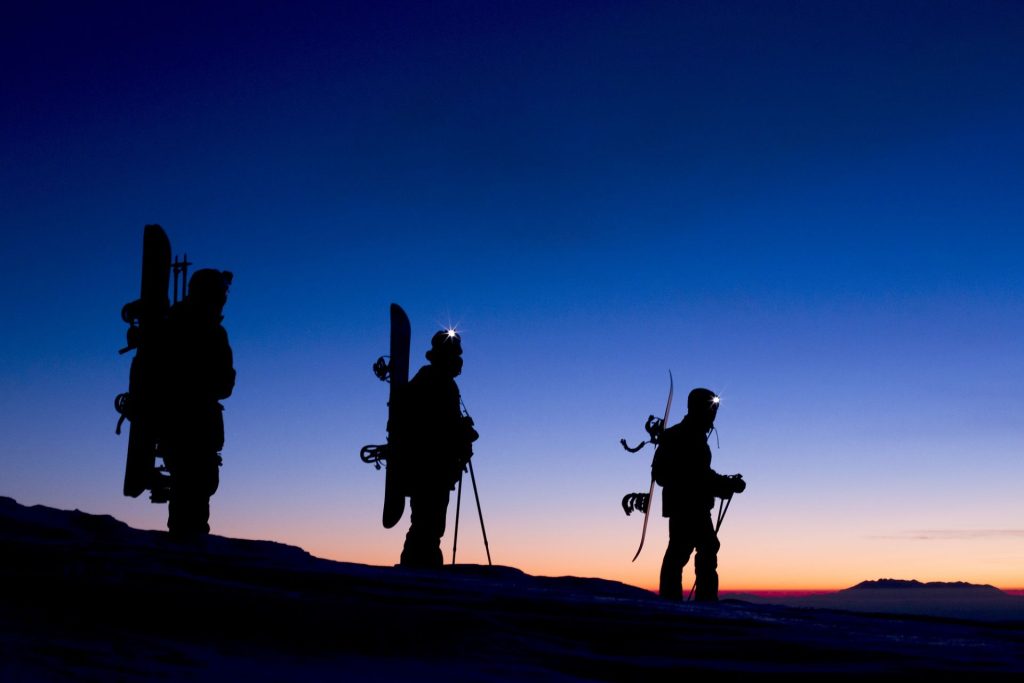
Snowboard photographers traverse the globe following the best riders and searching for the most epic snow conditions in far-flung locations. However, sometimes the most meaningful experiences can be found closer to home, as f-stop Ambassador Alex Grymanis found. He explored the beautiful landscapes of Northern Greece through snowboarding.
Greece might not be the first place that springs to mind for snowboarding, but for Alex, the trip gave him the chance to hit the road with close friends and re-experience what made them fall in love with snowboarding and adventure.
This trip taught us that we can achieve anything as long as we have the will and the aspiration to do our thing and we do hope that it will inspire you to do the same.
Alex Grymanis
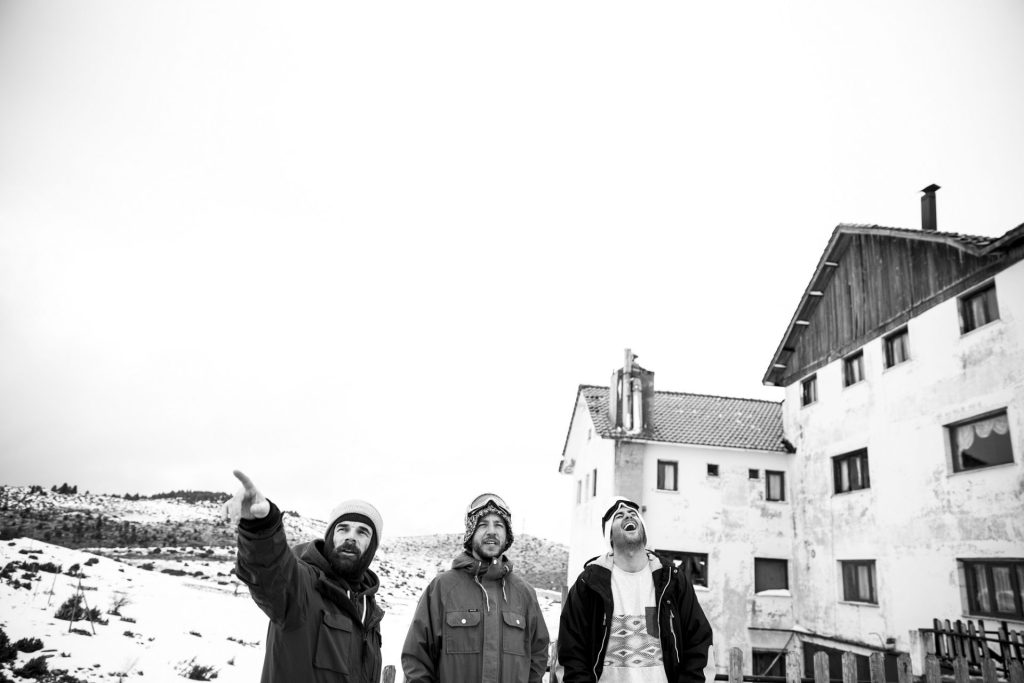
Last February, almost a year ago, I traveled through northern Greece. This trip started with a few friends, in an RV, for 10 days in search of snow and new places in our country, Greece, where we could snowboard. The fact is that it came to be a trip about creativity, relaxing, and being once again carefree. During these 10 days not only did we become children again and remember the feeling of being away from the concrete and loud city, but we also learned how to coexist in a small, confined space and we reconnected with nature.
Now that a year has passed by, a book, a video, and these photographs keep that trip alive in our memory and make it possible to share this experience with you.
Everything seems fun and normal until you wake up the first morning surrounded by snow and by your friends all in a tiny four-wheeled house. The sweet lullaby from the wind and the sound of the trees at night become your guide and sooner or later you realize that you need to adapt to this new environment along with all of your gear, cameras, and wardrobe along with its frustrations. You learn to respect other people’s privacy, needs, and weirdness and start working together as a team. In places without electricity and no internet, the real connection between you, your friends, and the people you meet happens.
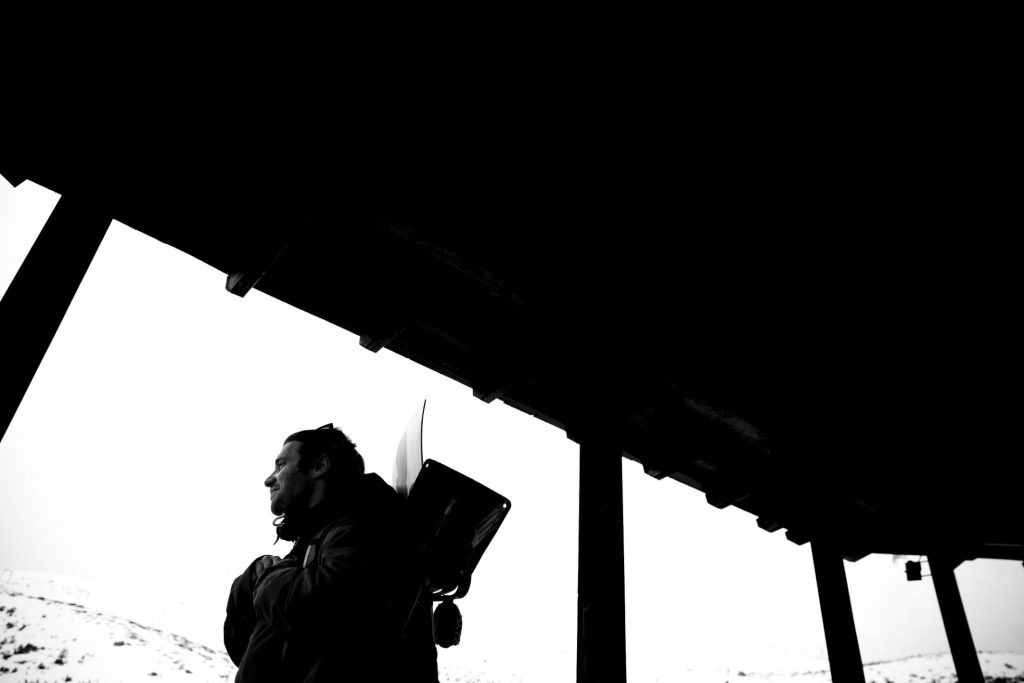

Growing up and having to work more to make your living, tends to shift your mind away from the things that you really love and make you feel happy and free. The deeper search in locations already known wakes up that feeling of rebirth and connection with the mountain. We got blessed with a heavy snowfall in Vasilitsa in the middle of the trip and decided to explore the “already known” slopes but from a different angle.
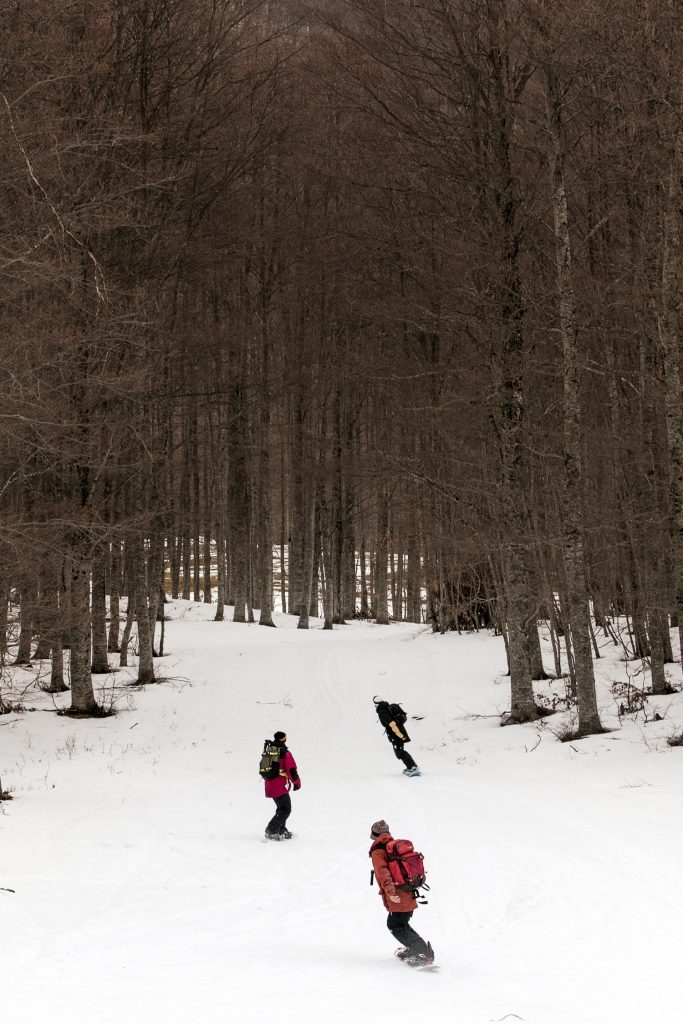
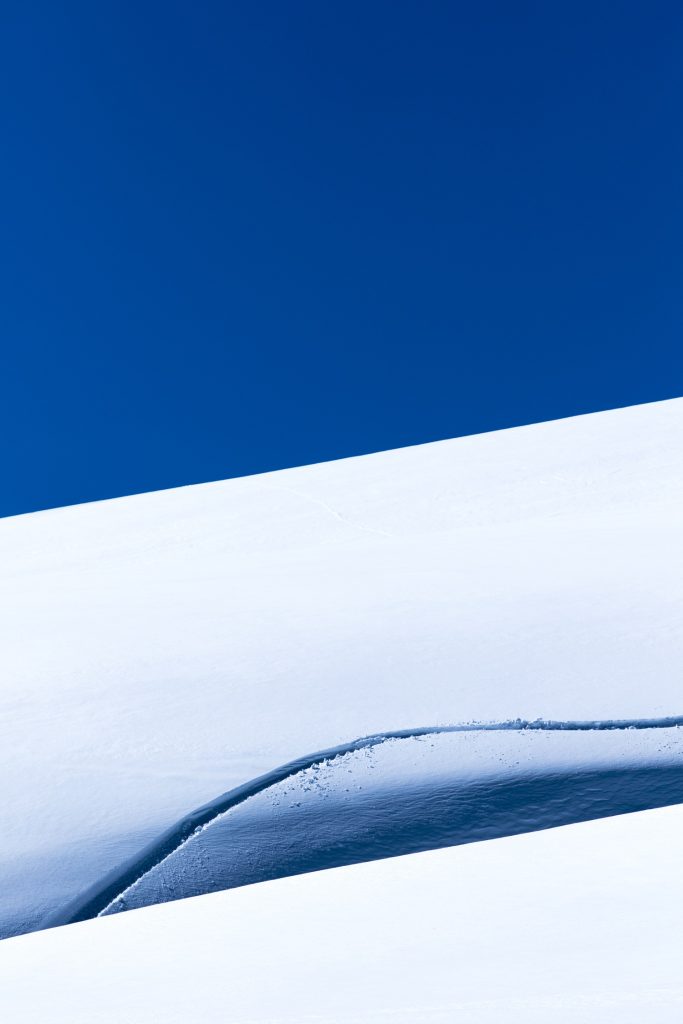

Snoozing the alarm was our biggest fear for that night’s mission. It was the coldest night of the trip but at the same time the most beautiful of them all. The sky was clear and full of stars so bright that it seemed we were walking on the moon. Our motivation for the hike soon became stronger and we made it to the peak slightly earlier than expected. After a short rest, we strapped in our boards on the backpacks with Gatekeeper Straps and when the first sun ray hit the slope we dropped into the line that would shift our perspectives of snowboarding forever.
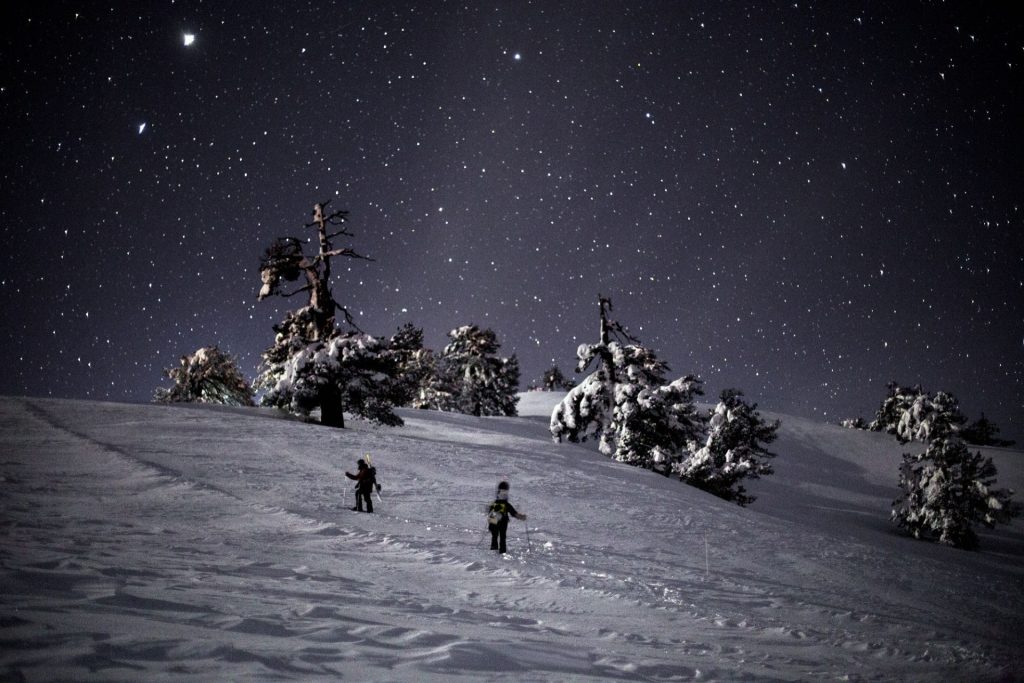

Making every day count was the main idea since day one. Downdays came with heavy rain on the mountains and it was time for us to hit the road. On the way to Metsovo, we made a 180-degree turn and drove even further north to the Prespese Lakes. We got to experience the life of local fishermen and saw farmers burning their fields to prepare them for the following season in a place that stood out from the rest of the trip. Needless to say, we had the best feast on the whole trip.
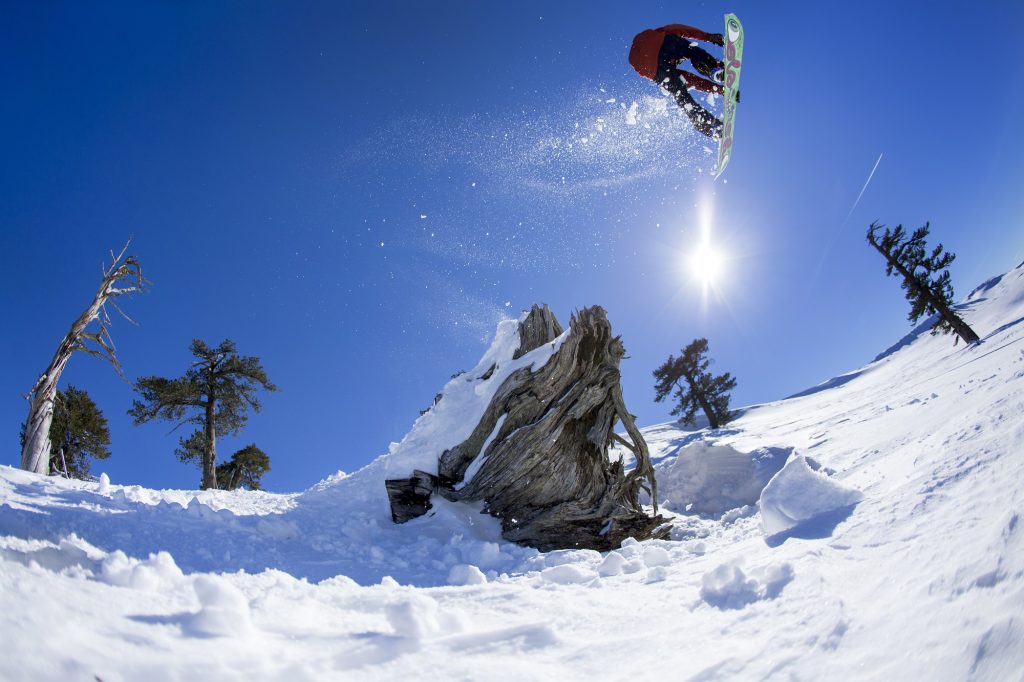


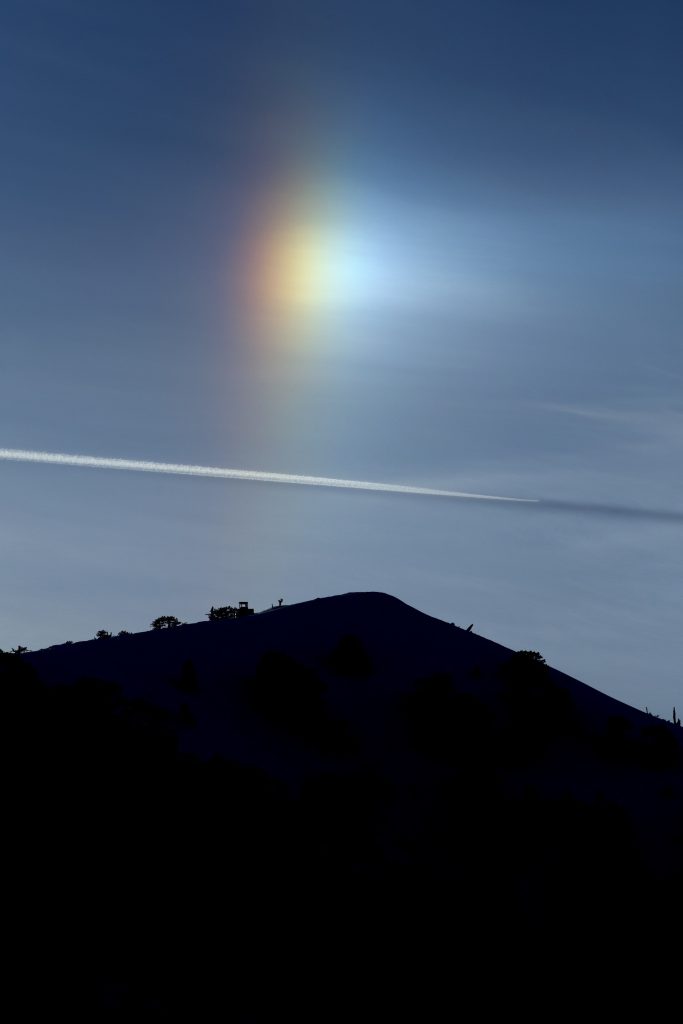
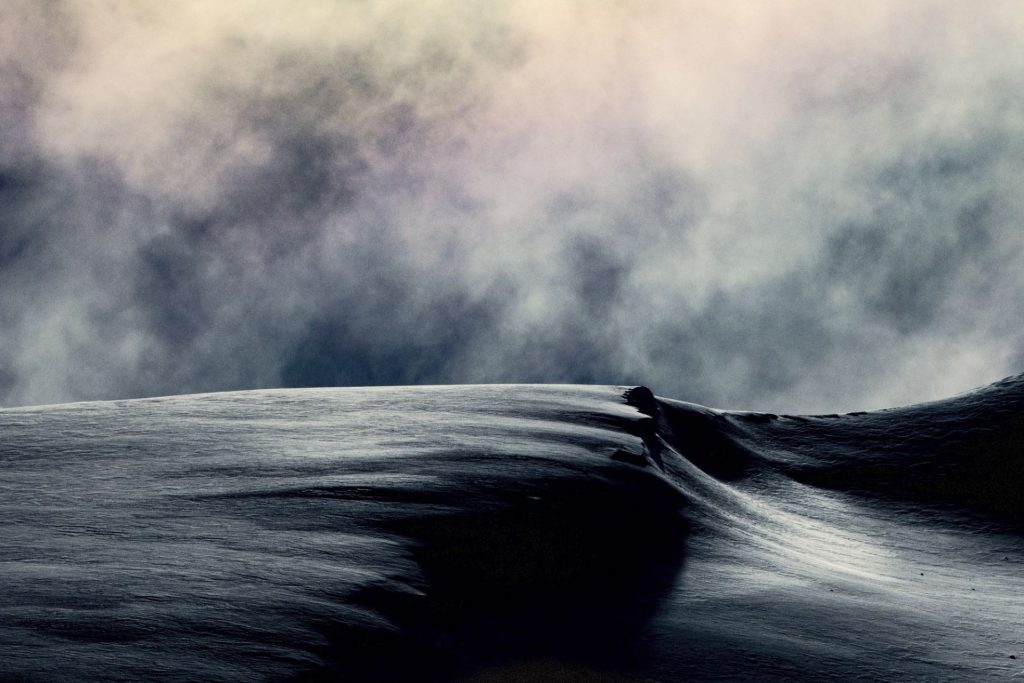
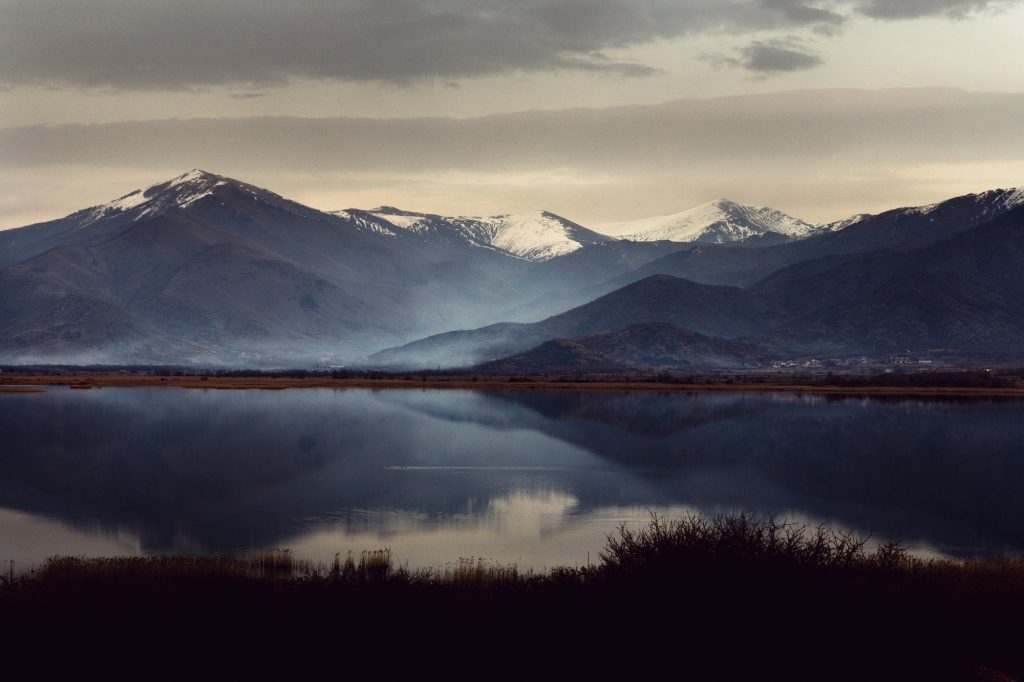
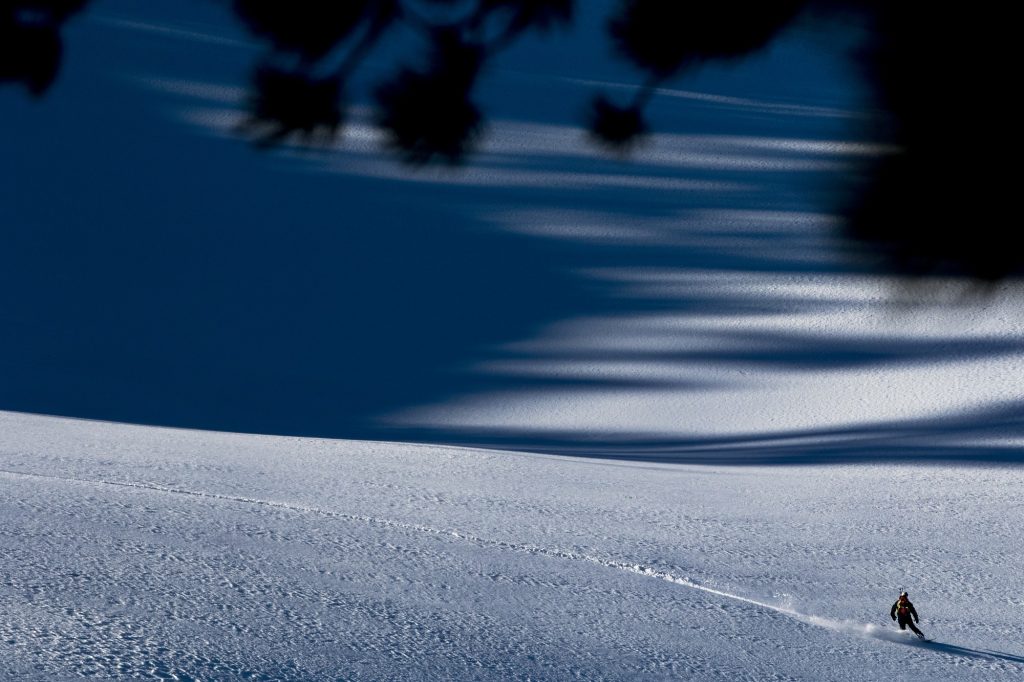




Ever since his first skydive, f-stop Staff Pro Jesper Grønnemark had the idea of doing a photo shoot while in the air. This is how it went. Even though as he says, his first skydive was more than enough for him, this idea remained stuck in his mind.
The idea became a reality when Jesper teamed up with the guys from Flux Freefly, gave them a Profoto B1X, and jumped out of an airplane at 13,200 feet to take his photography to new heights.
His heart is racing, adrenaline is gushing into his veins as the door of the airplane opens. 13.200 ft. (4 km) under him the ground stares back. This is it, one chance, one shot. His grip on the Sony A7R II tightens as they move out the side of the plane, 45 seconds of free fall awaits, 3, 2, 1…
FLUX: Benjamiin Laudrup, Jacob Lundsgaard Madsen and Emil Landeværn Kristensen; Head of the project: Michael Boe Laigaard; Lights: Profoto; Camera equipment: Sony Nordic; Video: Kasper Sveistrup - Frame2film; Graphics: Niels Borup - Saftig; Article: Kira Andersen; Pilot: Fillip Højlund Aarhus skydive club Red Bull Denmark
The eternal strive to push the boundaries of what people believe is possible in sports photography has put Jesper Grønnemark in a position he did not imagine himself in again. After his first skydiving experience, some years ago, it wasn´t an immediate love story. Now, here he is again on account of his own creative thinking. Why would he do it again you might ask. Well, the answer is, he needs to. In order to push those boundaries, he is more than willing to put himself in extreme situations.
When trying to capture the emotions of a skydiving experience, safe is not part of the vocabulary.
Jesper Gronnemark
How do you make it happen then? In short, you need a man with a plan, and that man was Michael Boe Laigaard, head of the project in terms of finding the right people, and those people came in the form of the Danish national team in free fly - FLUX.
They are the best when it comes to jumping out of planes and falling controlled through the air. The original plan was that they would all have their parachutes out, Jesper with the camera and Benjamiin with the Profoto B1X flash. It would have been easier to track the skydiver, or Mr. Bill as the “model” is called in skydiving, through the air. However, shortly before the jump, it was deemed too dangerous due to wind and the plan changed to free fall. This new challenge was going to put an even greater demand on Jesper's skills as a sports photographer since they only had one jump and now had to nail the shot in a fall going 200 km/h.
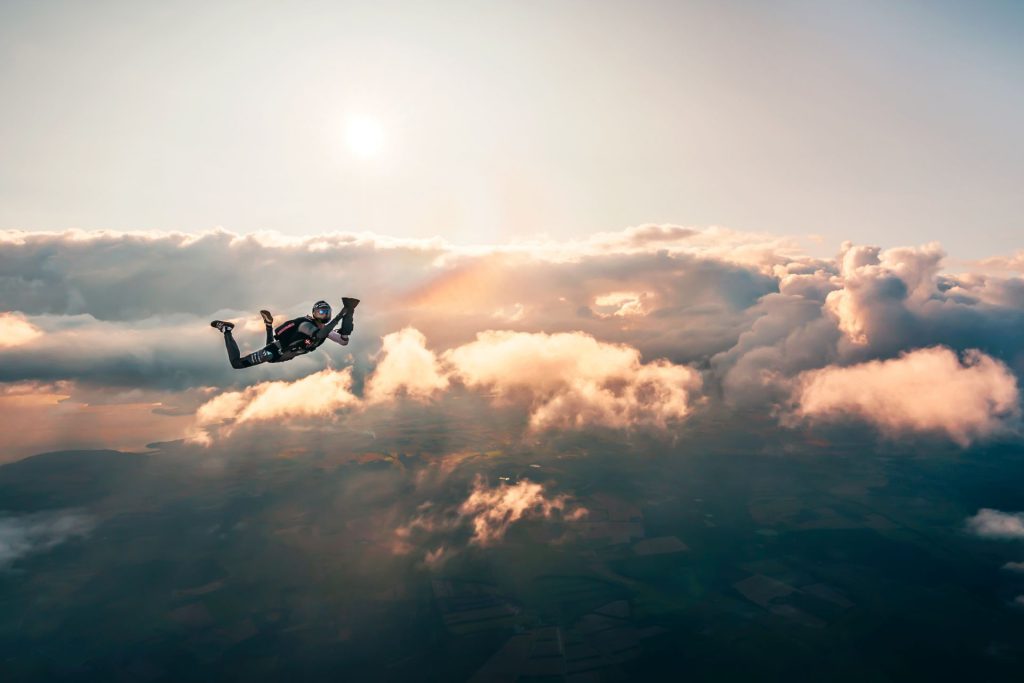
Benjamiin with the Profoto B1X flash
GO! As Jesper is falling through the air, he sees the skydiver approaching from above, he gets his camera in place and suddenly he is cool, calm, and collected. The workflow is such an integrated part of him, that even in a time like this, it overthrows the adrenaline rush. Furthermore, he only has one shot, so he better make it count! The skydiver is head down, shots are fired, and not long after it parachutes out and a touchdown. Fingers are crossed on all parts. How did it turn out?
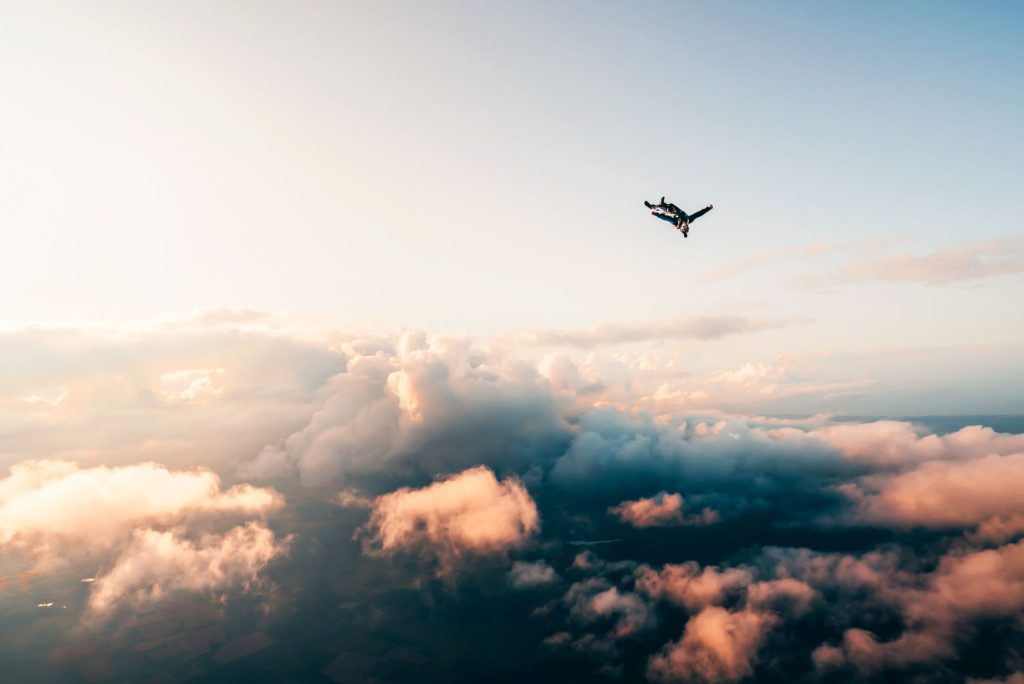
Emil approaches and gets into position for the desired skydiving photo
I only have one Shot, One Jump..and that's it. Once I got my camera to my face while flying through the air at 200 km/h, I was focused. There was no sound, no sense of falling and I didn't feel @michaelboelaigaard on my back.
My only mission was to get the shot!
Jesper Grønnemark
Once again Jesper proves that hard work and quite a bit of sacrifice pays off. A lot of planning went into this shoot and even so, they changed. However, it was for the best. Jesper got the image he originally envisioned! A man hanging in the air above the clouds, head down. It feels as if it would be safer if his head was up, but when trying to capture the emotions of a skydiving experience, safe is not part of the vocabulary.
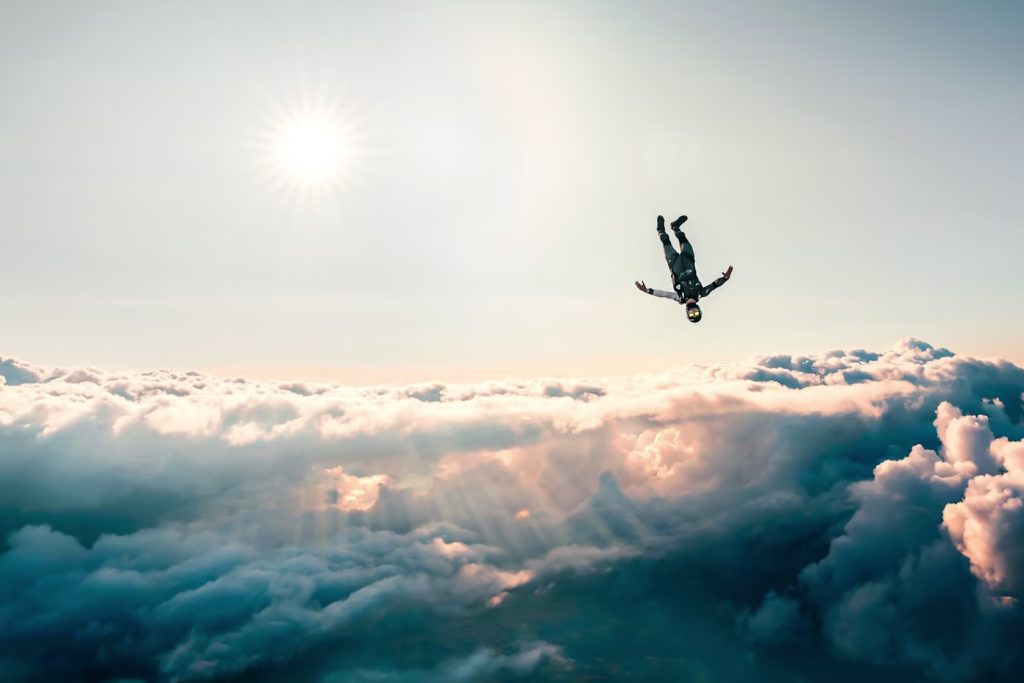
Skydiver Emil from FLUX heads down above the clouds at Sunset
Shot with Sony a7r II | Sony 24-70mm f/2.8 GM | Profoto B1X | SHUTTER SPEED: 1/1600, APERTURE: 10.0, ISO: 640

The Skydiving Team from FLUX; From Left to right: Jacob, Benjamiin, Emil

Benjamiin was the one holding the Profoto B1X at the free fall at Jesper's skydiving shoot. It isn’t normal to skydive with anything in your hands, but Benjamiin is an experienced guy, who already tried skydiving with fishing nets, fruits, and other crazy stuff

Jacob's role is to film Emil and Benjamiin from a close distance using a helmet-mounted camera while they perform. He usually does that by being flat in the air with his back facing the ground. He was also the one filming me from the air for the behind-the-scenes video for my skydiving shoot.
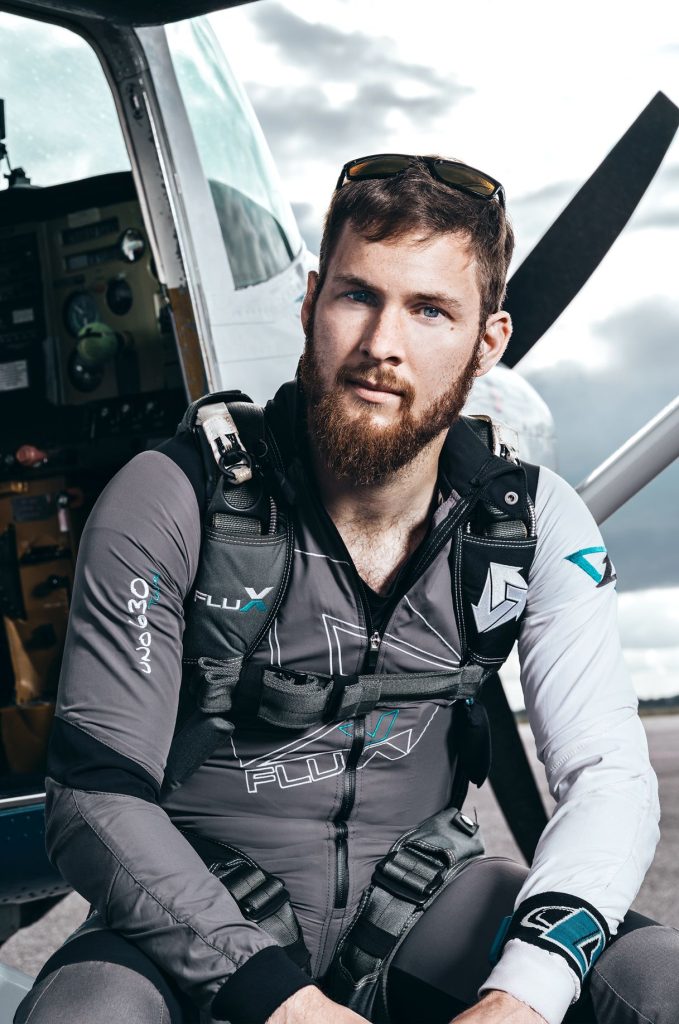
Emil was the athlete in front of the lens at Jesper's skydiving shoot. Emil recommended shooting him while he is doing a trick easily described as a front layout from the belly - a reversed Jesus rising to heaven. Jesper loved the idea because it starts a lot of thoughts at the one looking at the image when a guy is flying head first towards the ground.
[bc-component id="436" type="image"]
[bc-component id="383" type="image"]
[bc-component id="399" type="image"]
[bc-component id="437" type="image"]
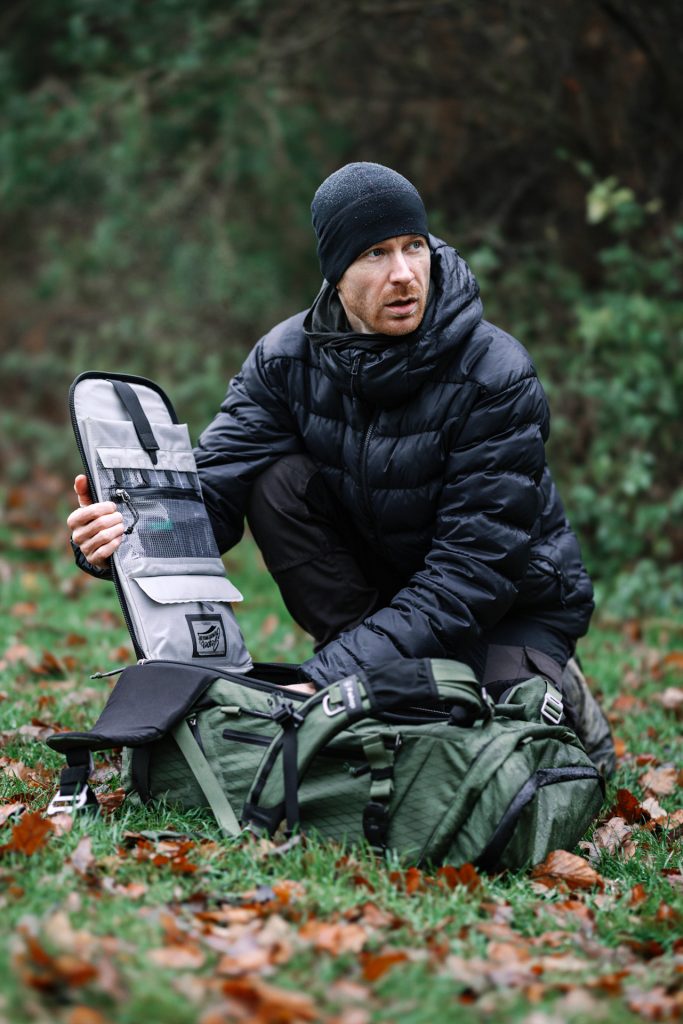
Jesper Grønnemark is renowned for his innovative approach to adventure and action sports photography, redefining the genre's conventional boundaries. See more of Jesper's work!






Discount Applied Successfully!
Your savings have been added to the cart.